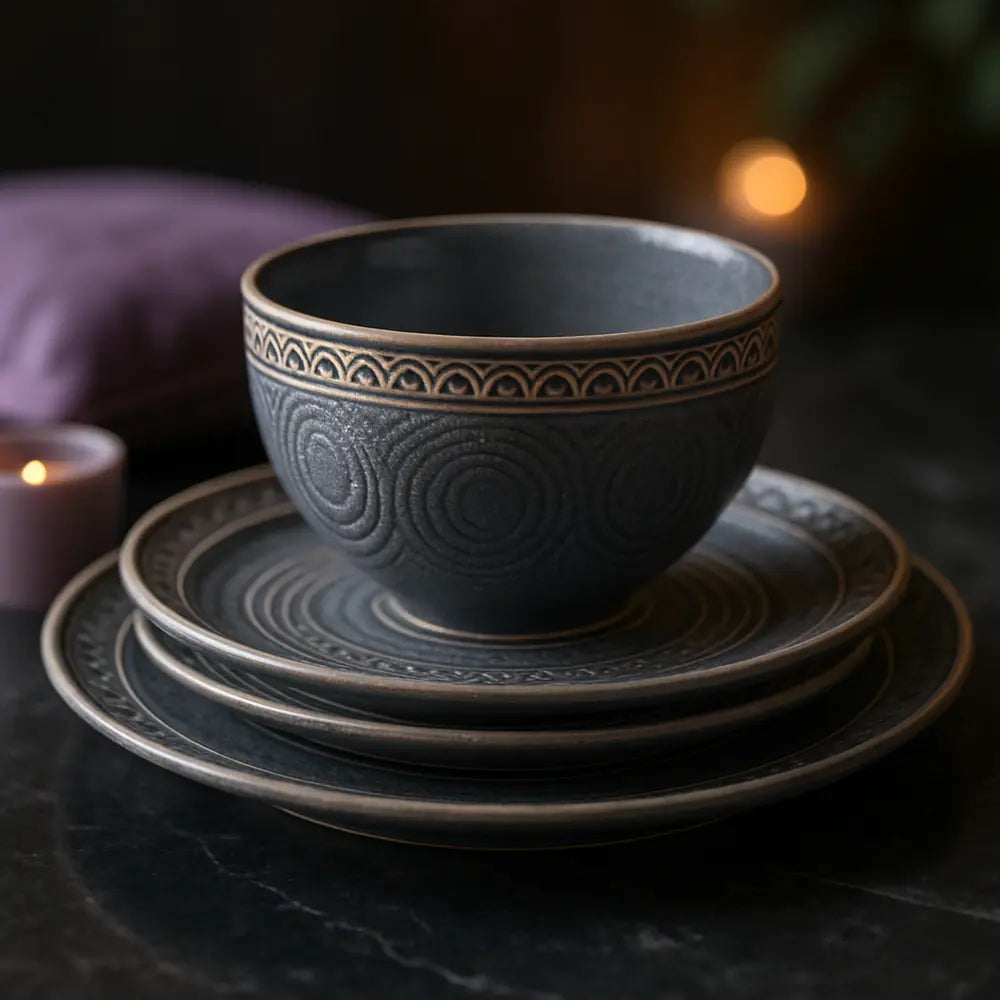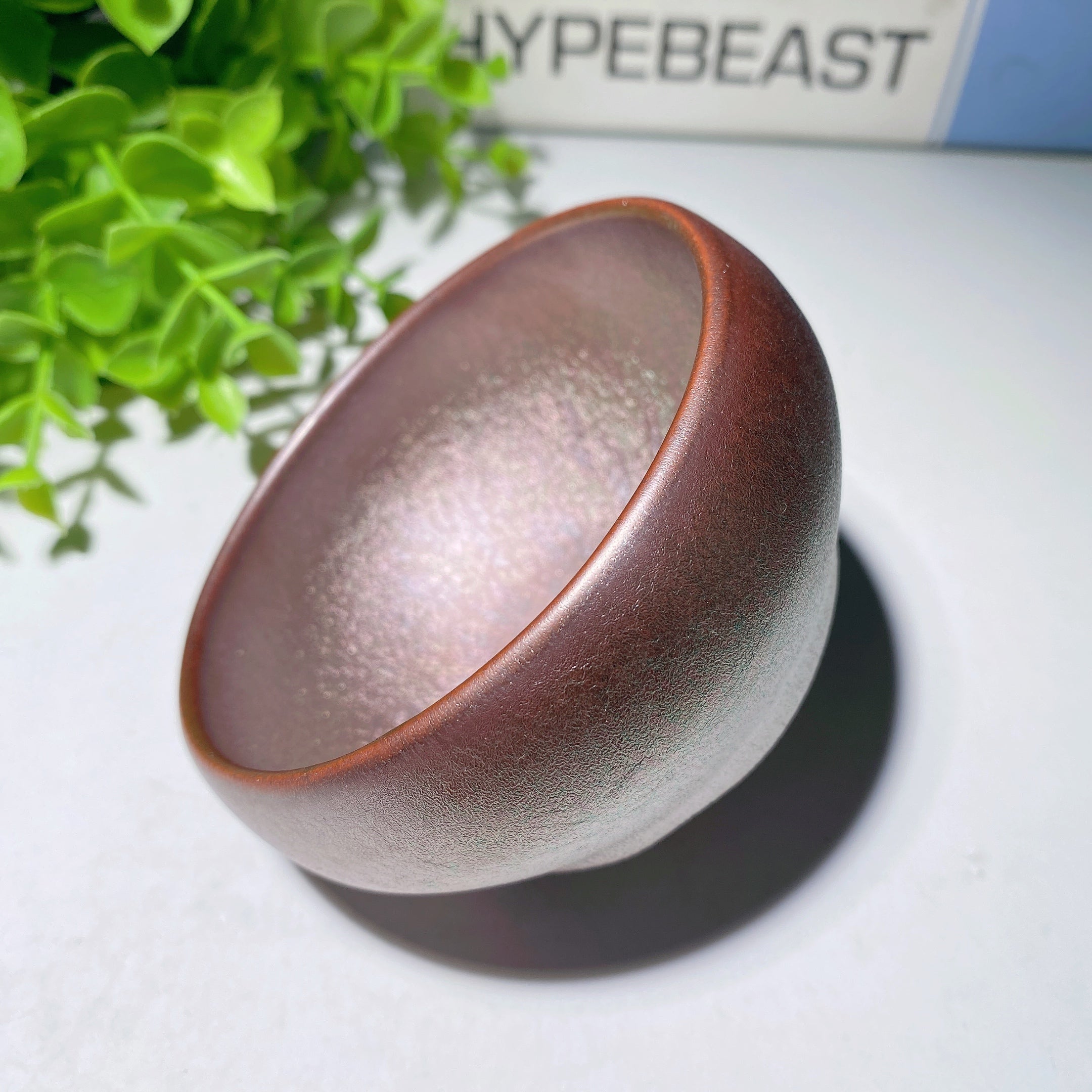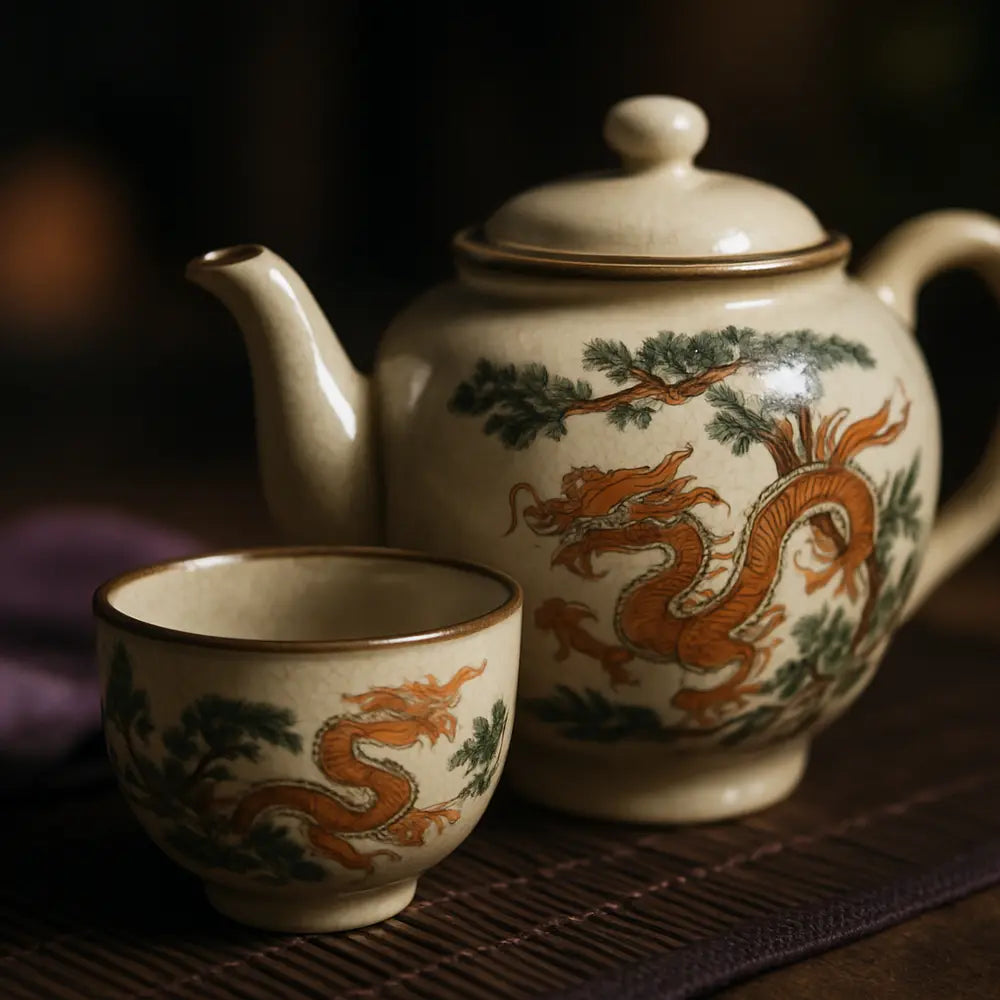
Chinesische Keramik
199 Produkte
Zeigt 1 - 24 von 199 Produkten
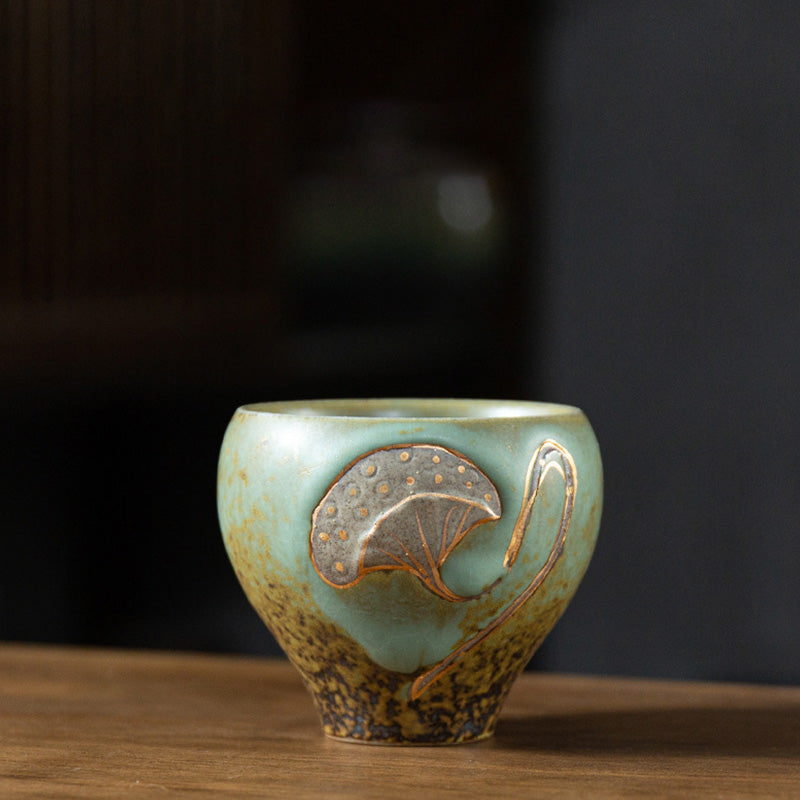
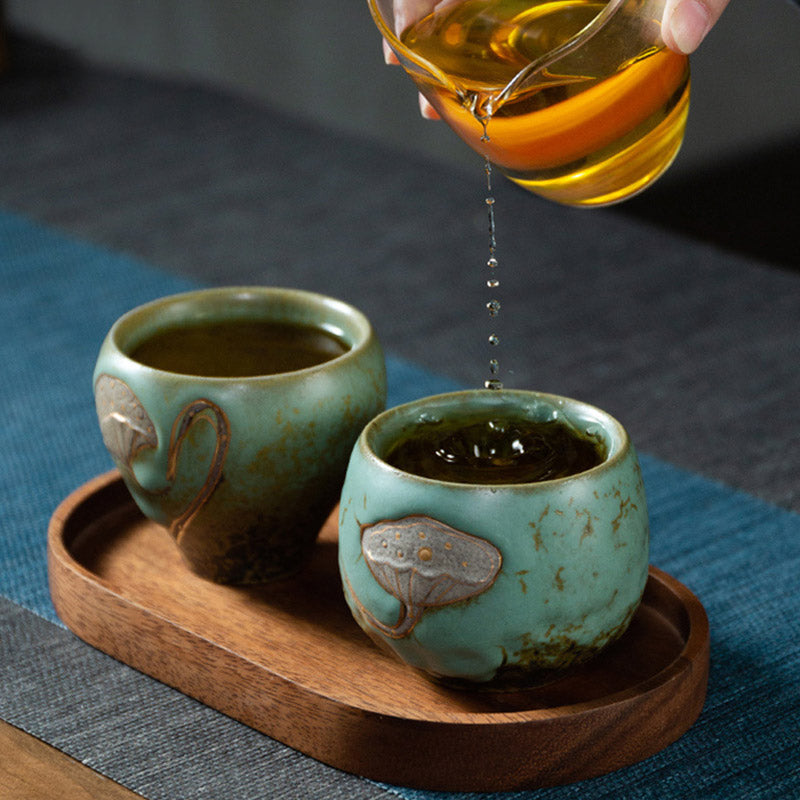
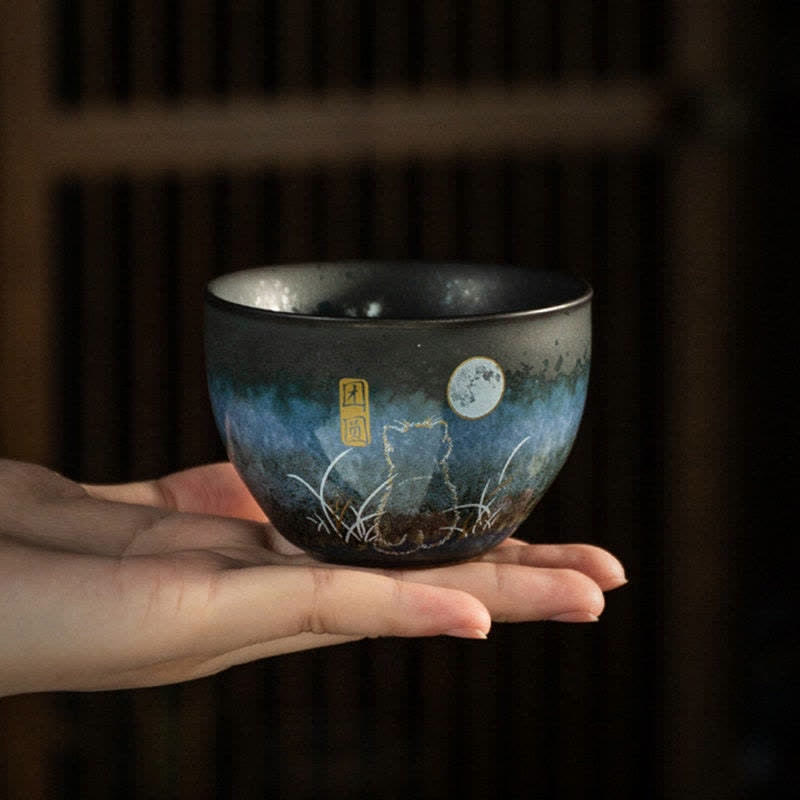
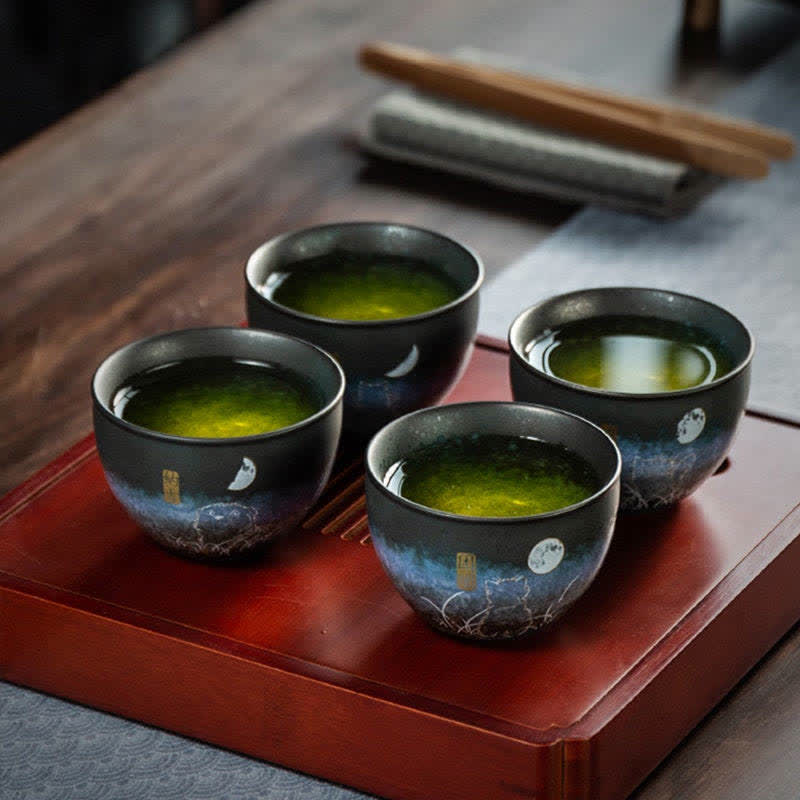
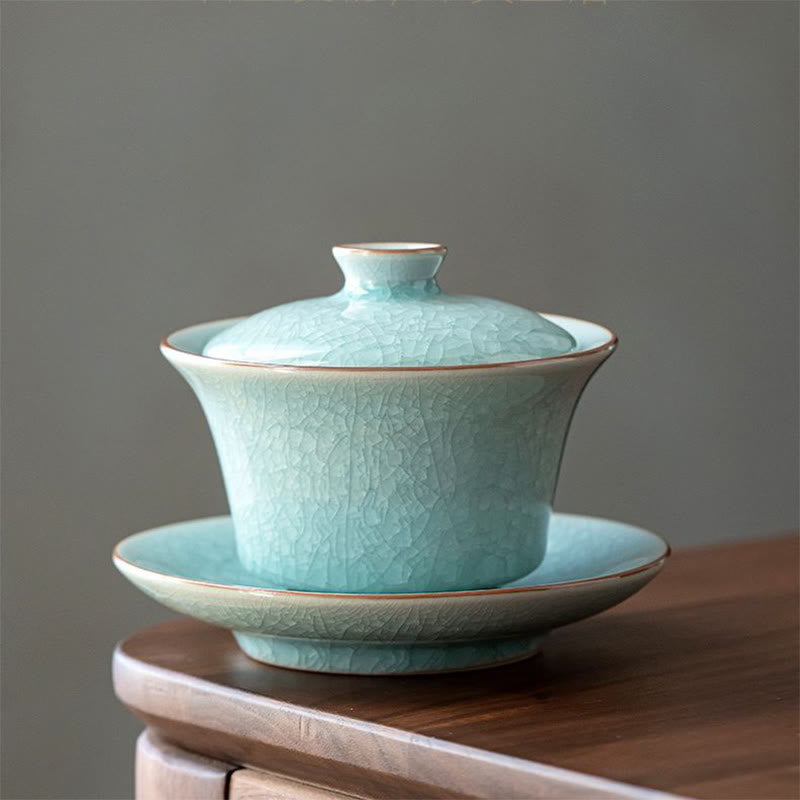

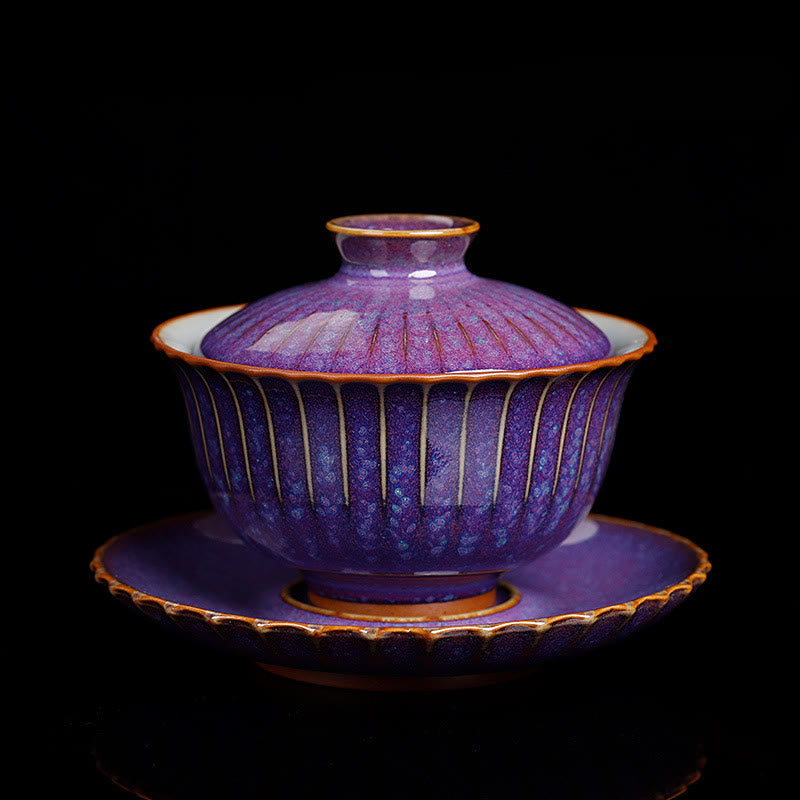
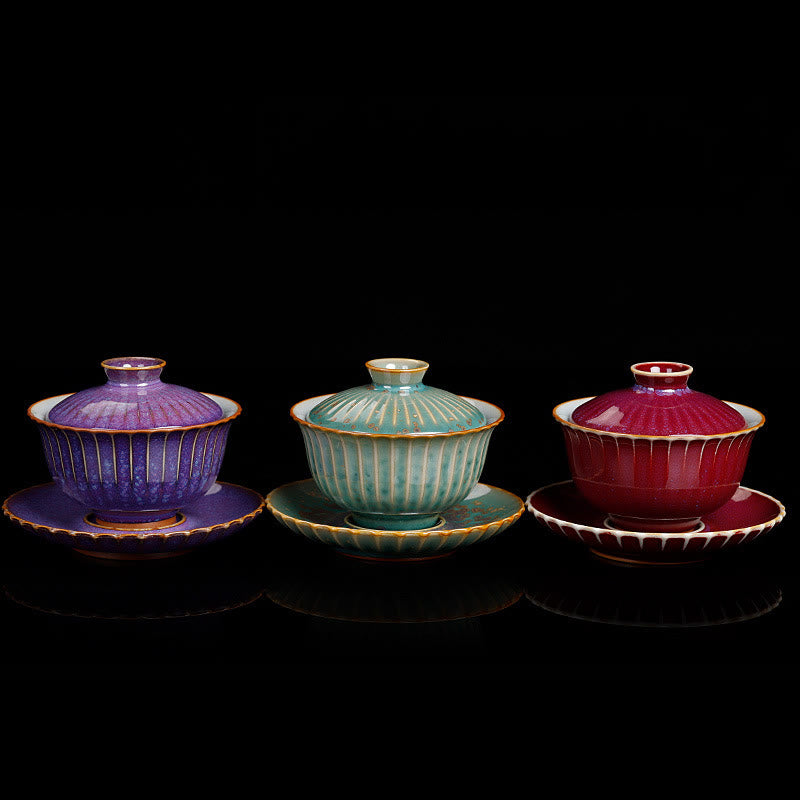

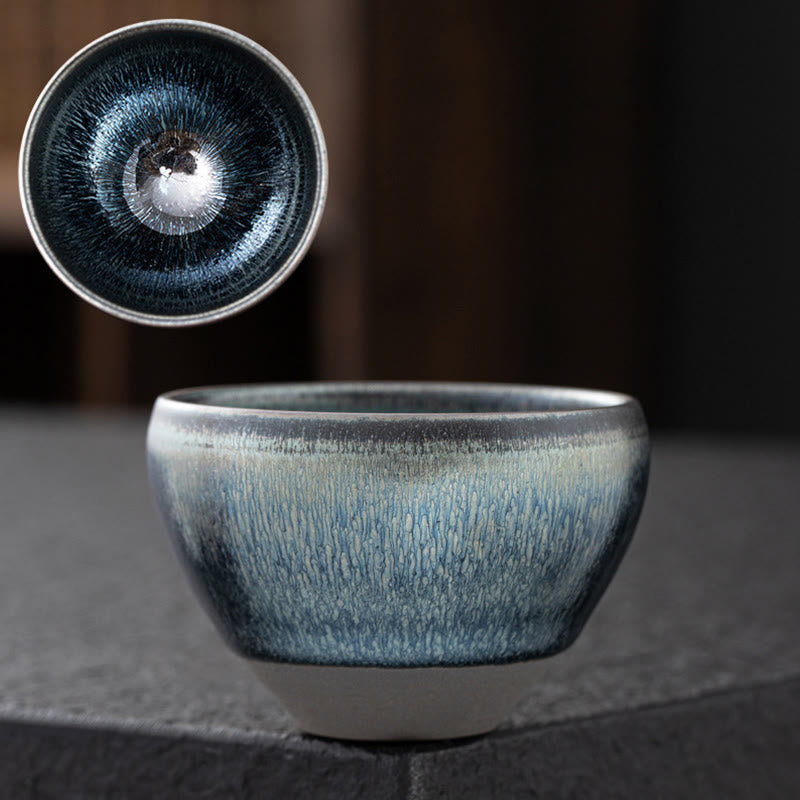
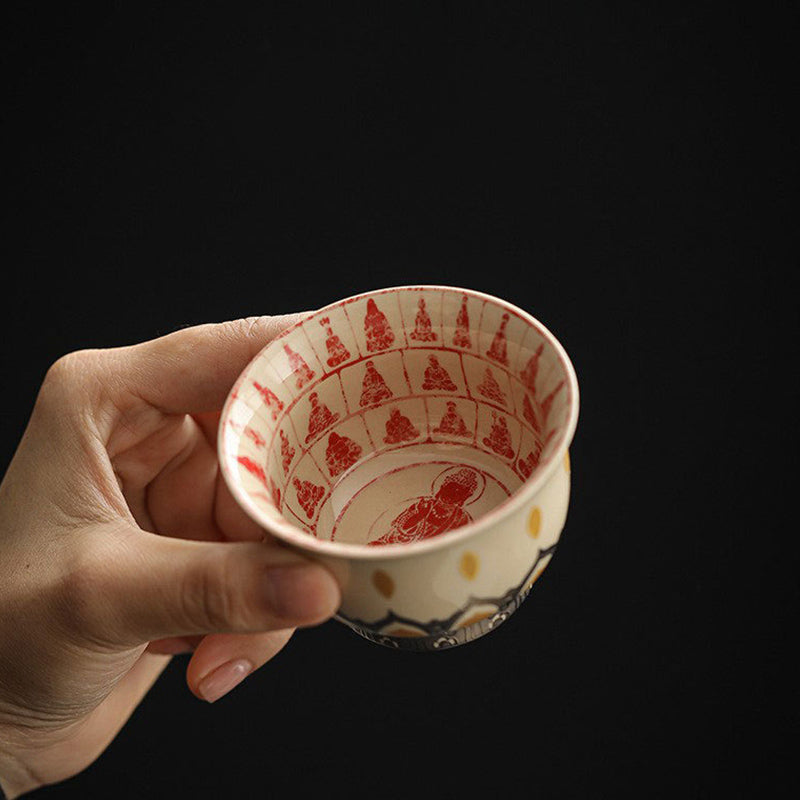
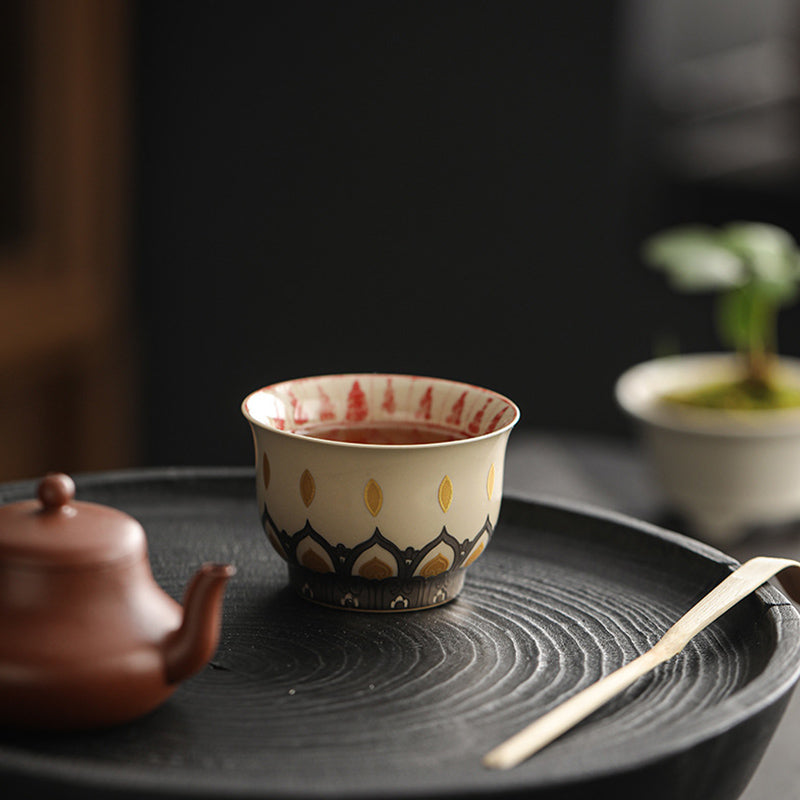
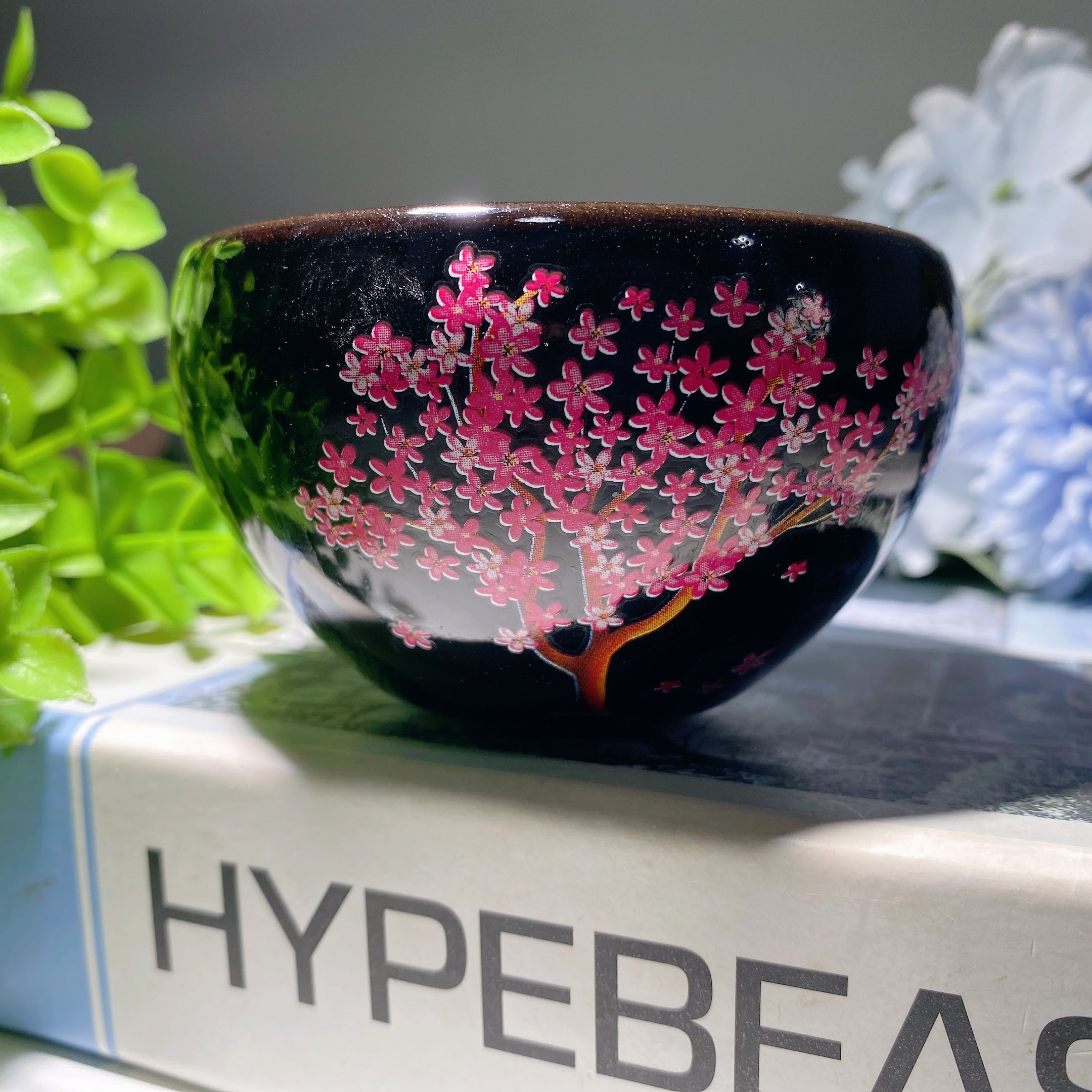
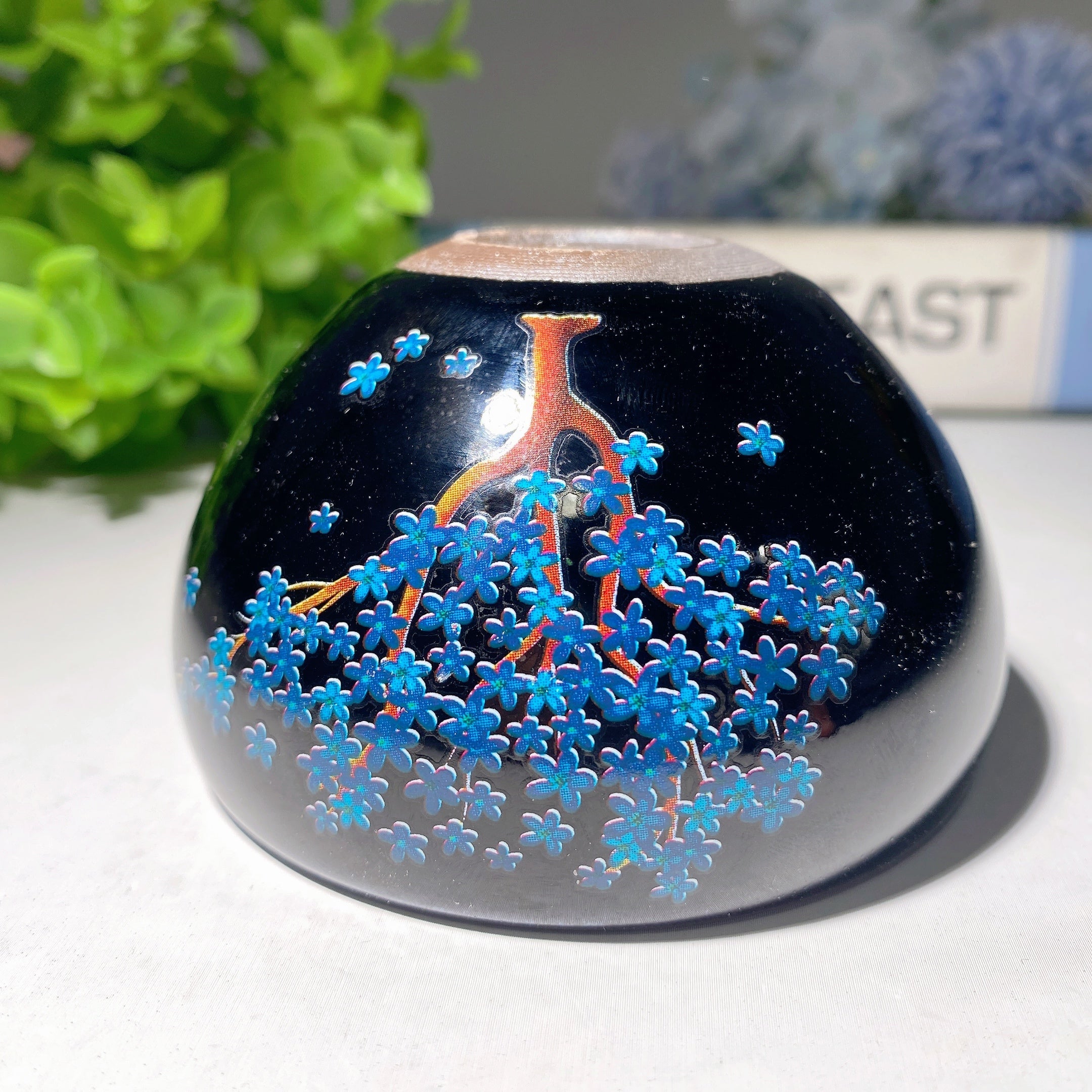
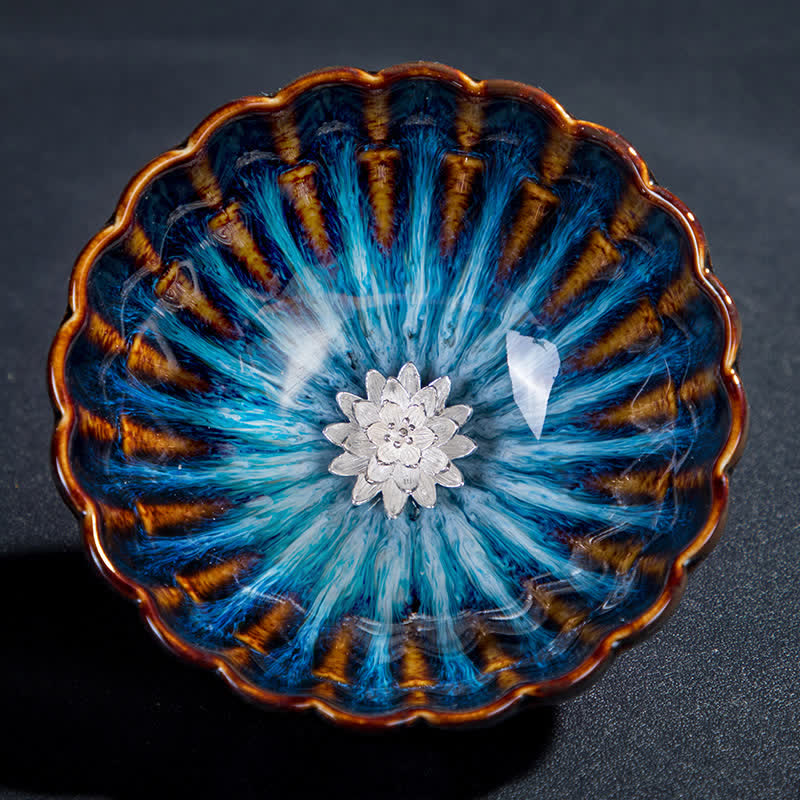
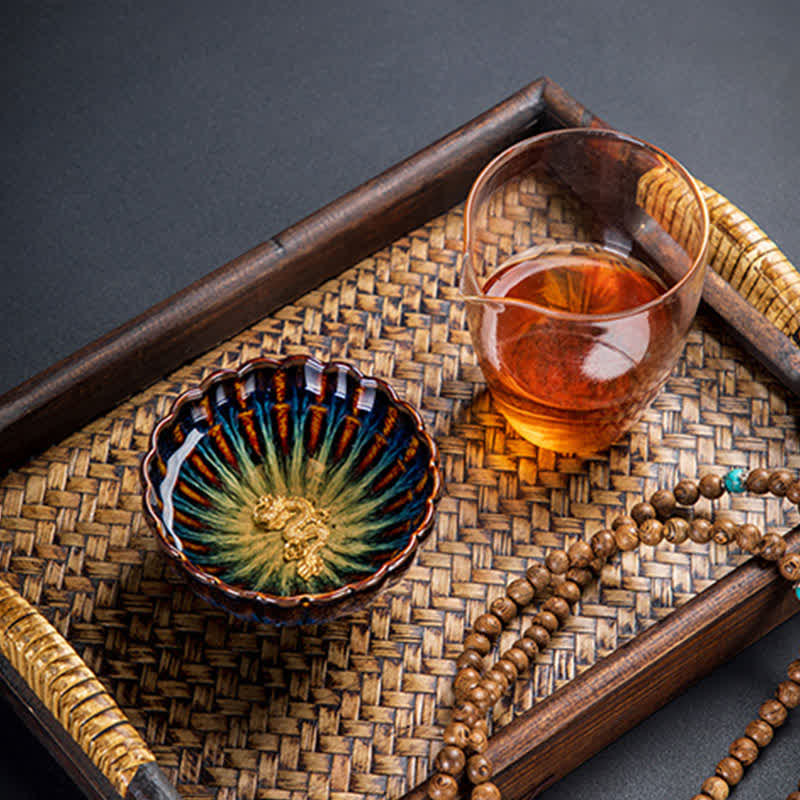
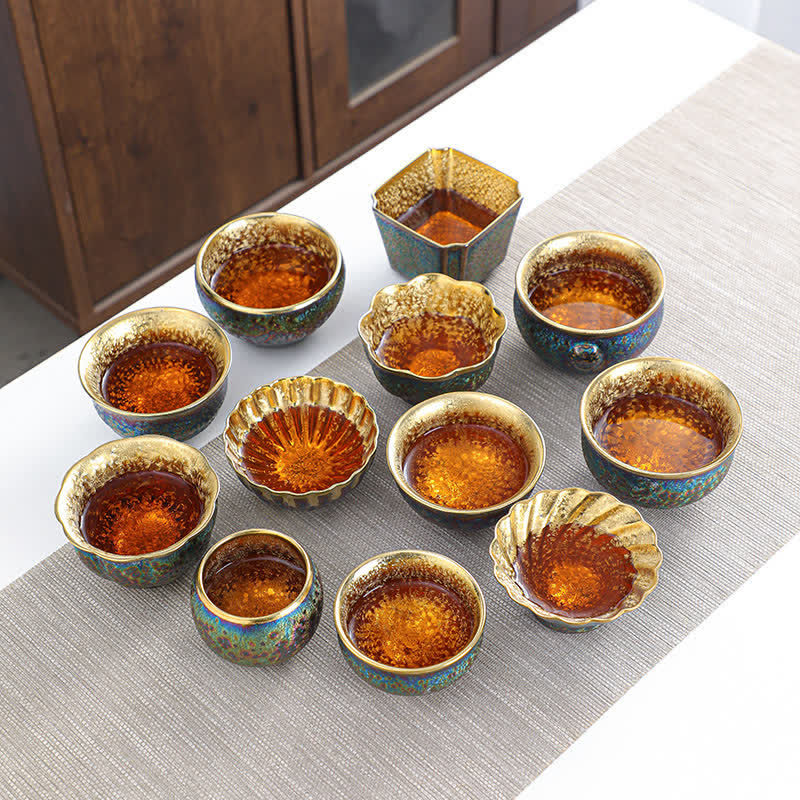
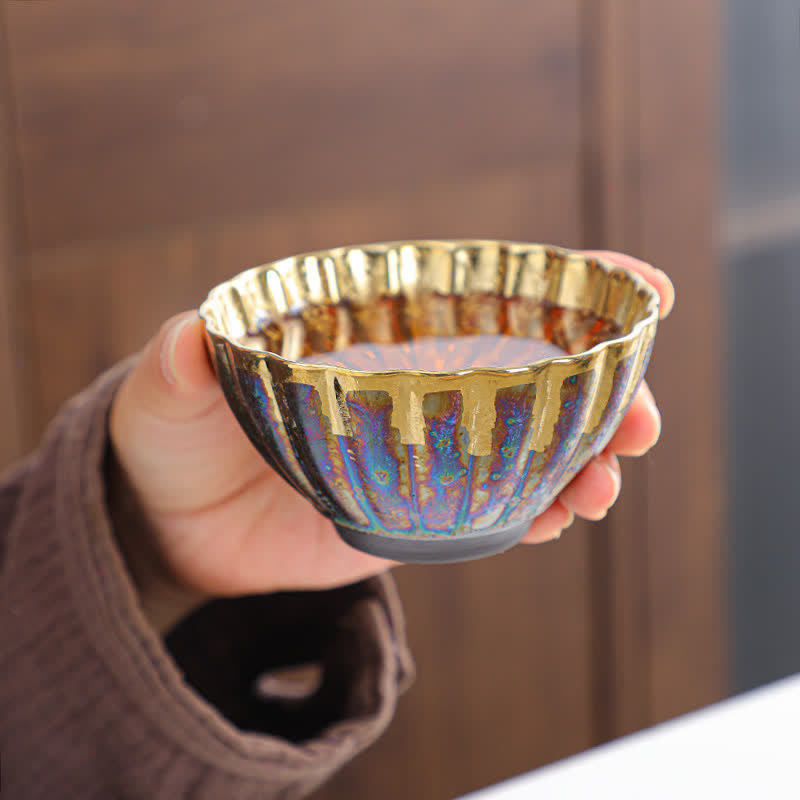


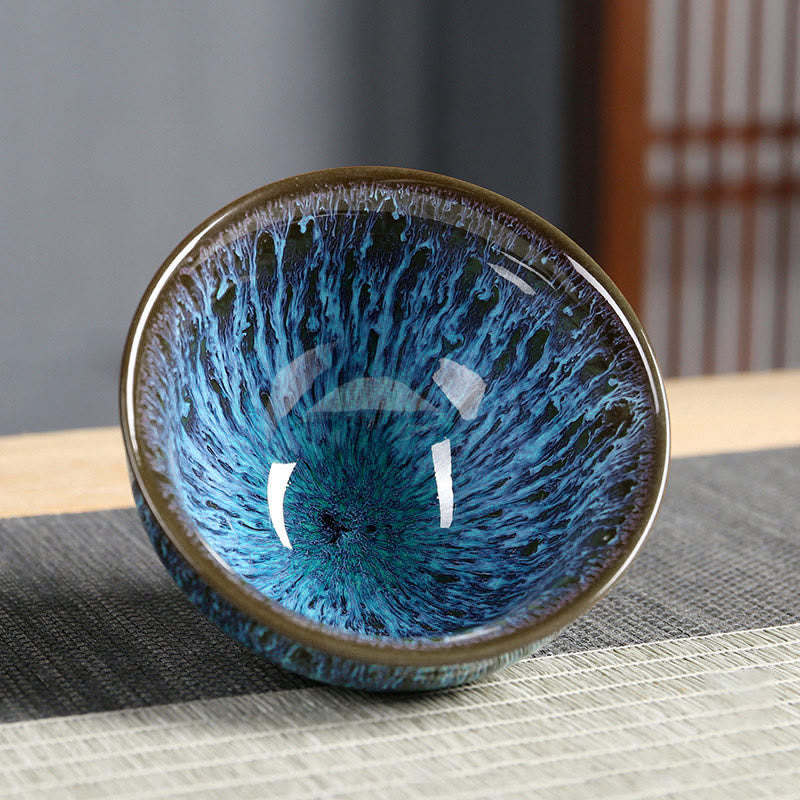
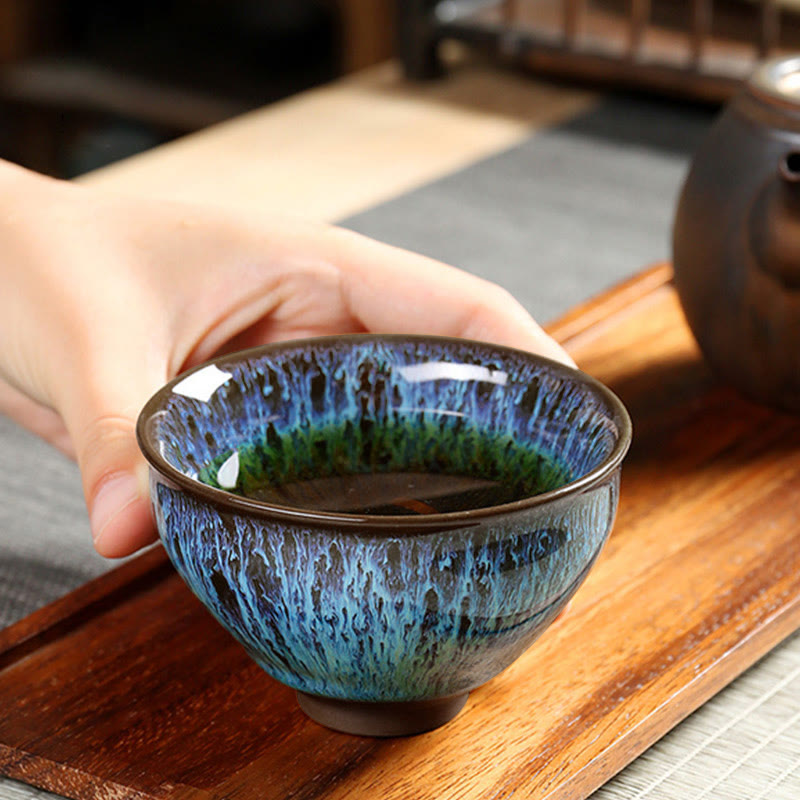
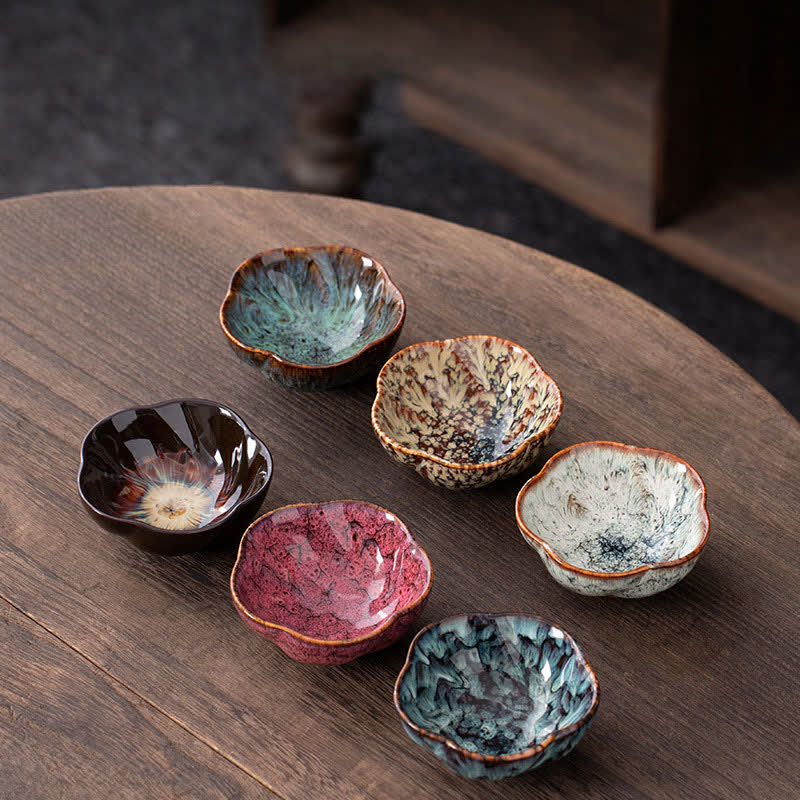


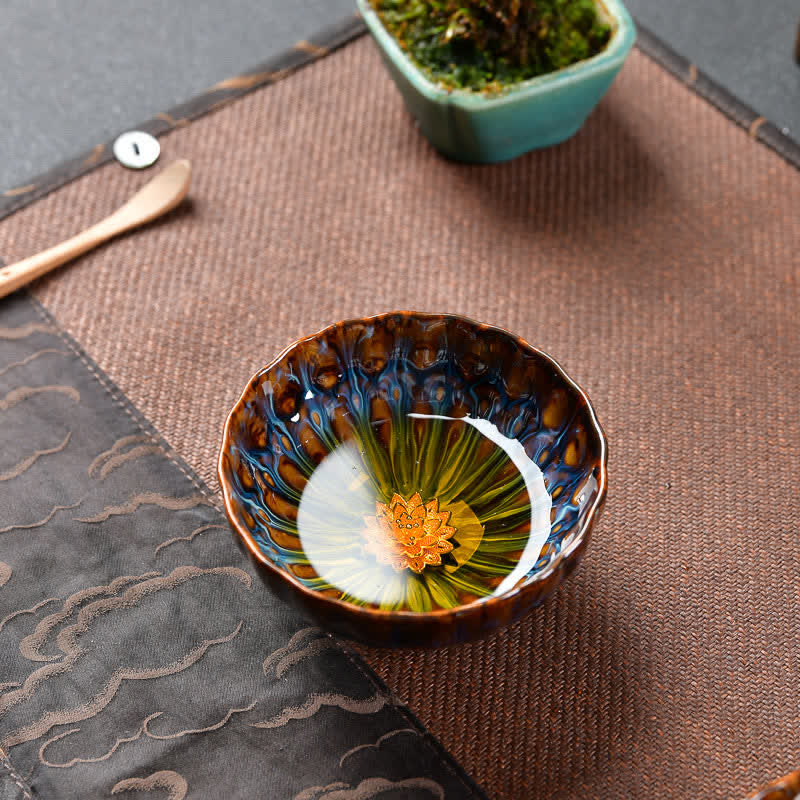
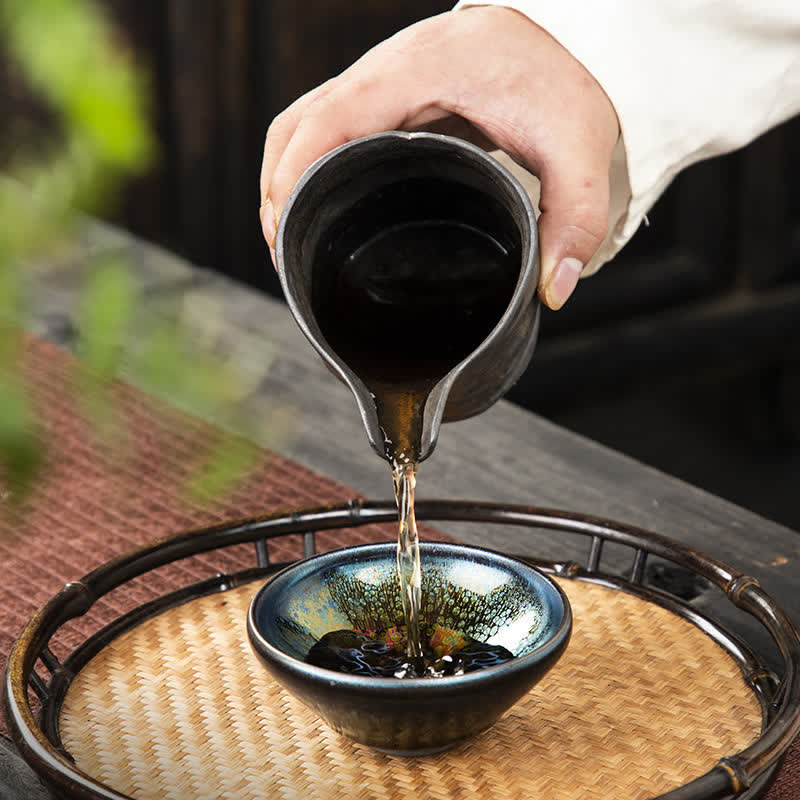
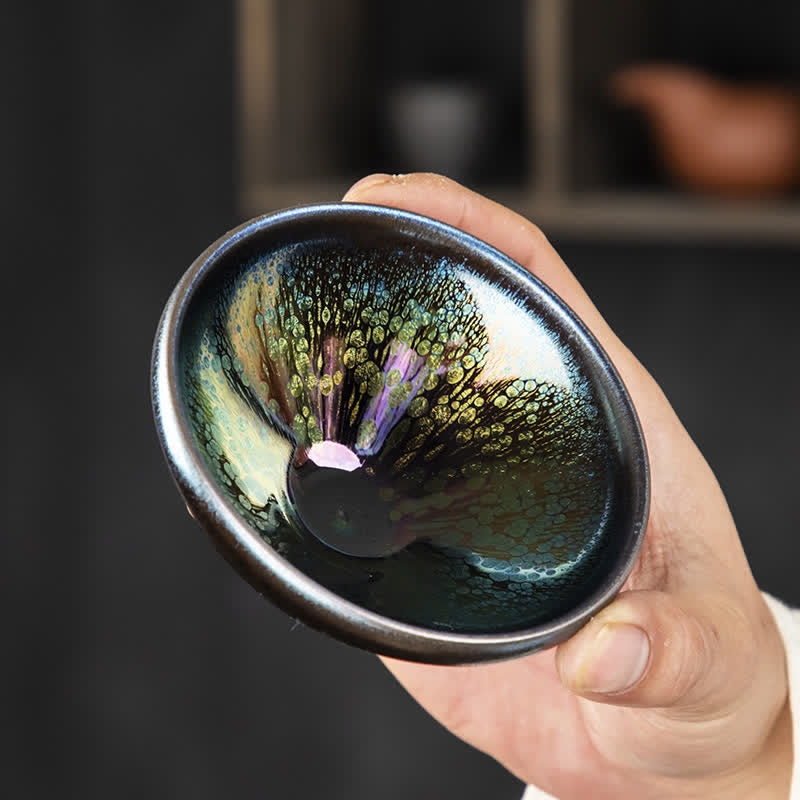
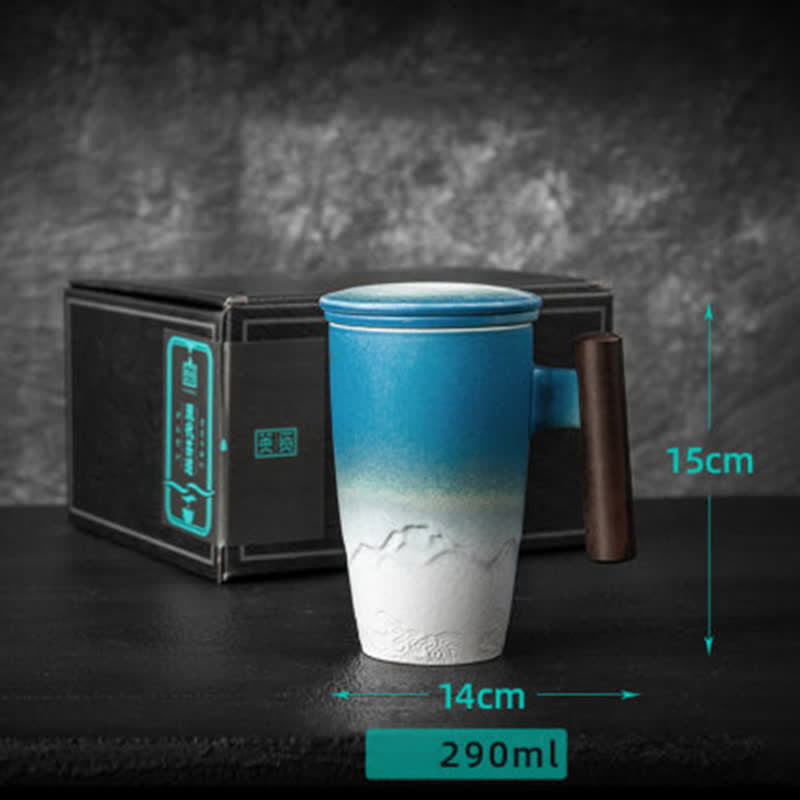
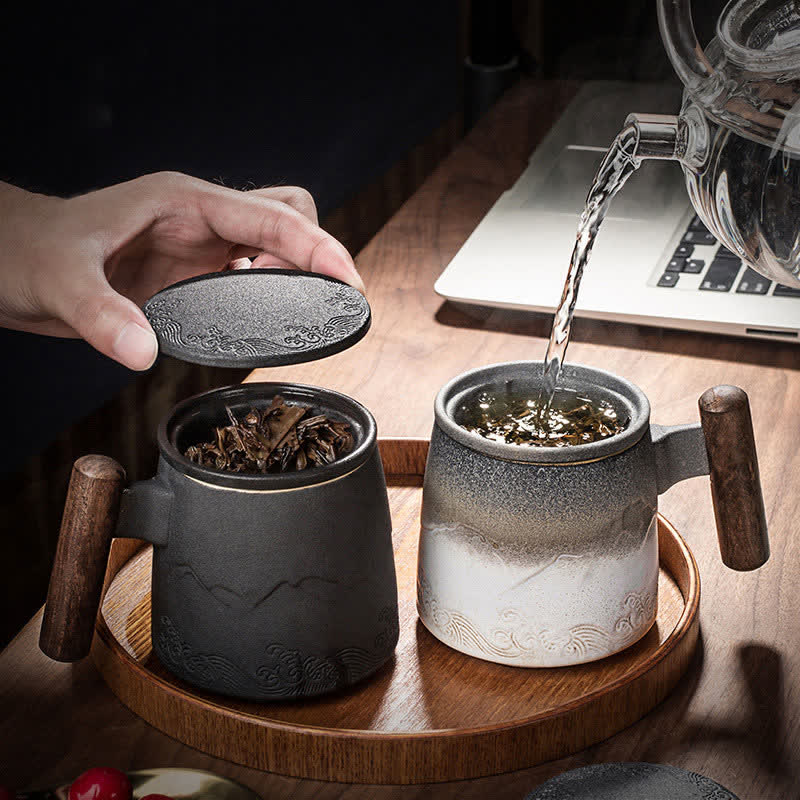

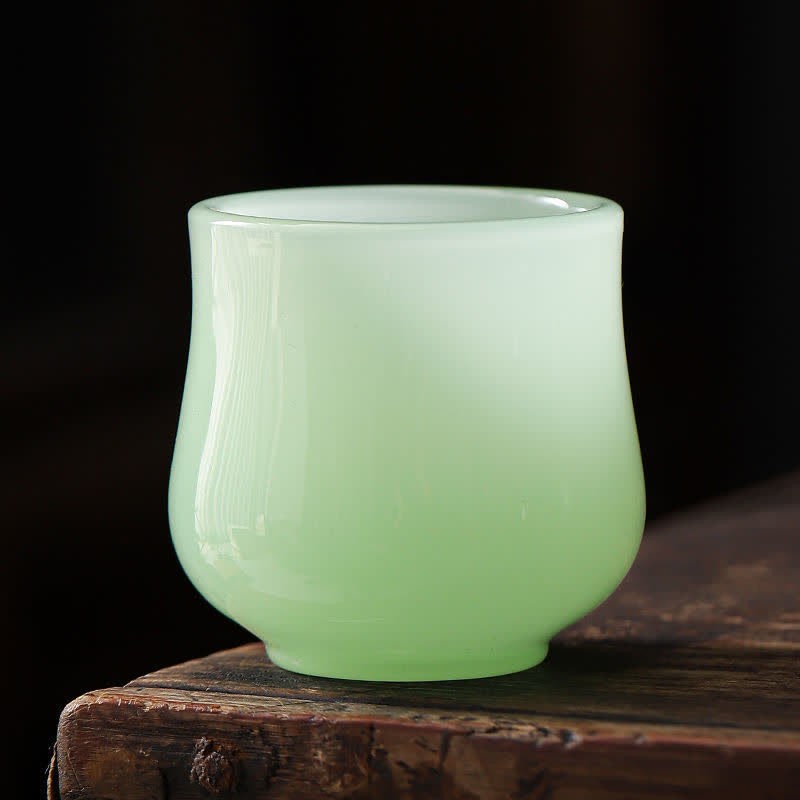
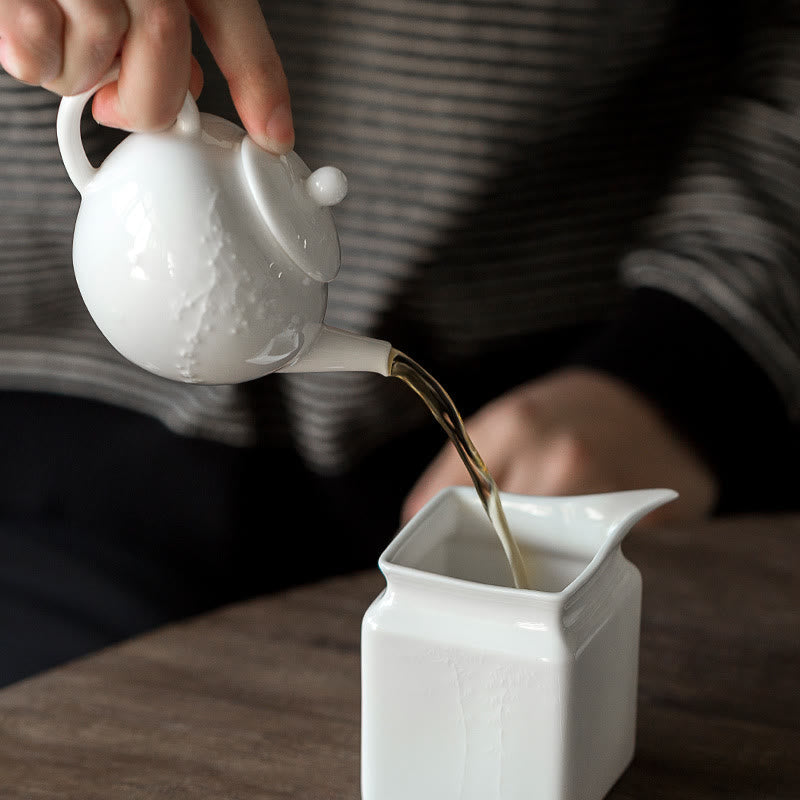
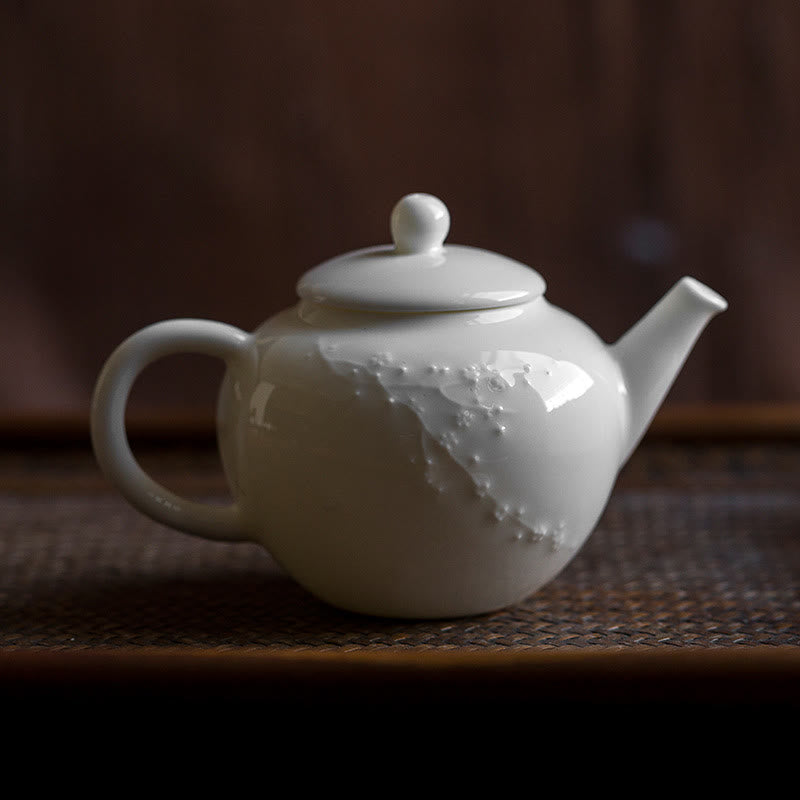
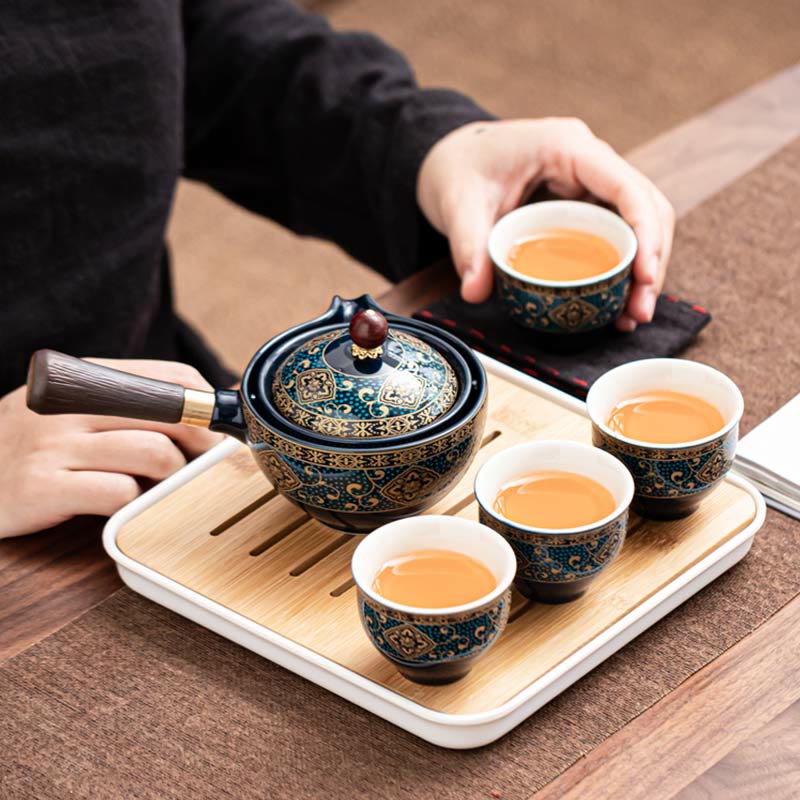
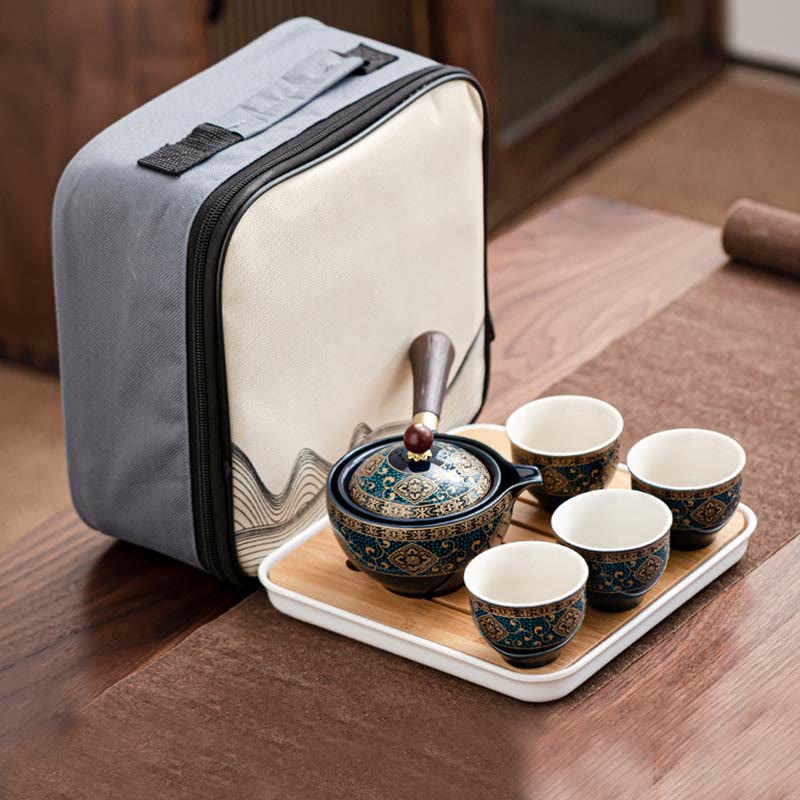
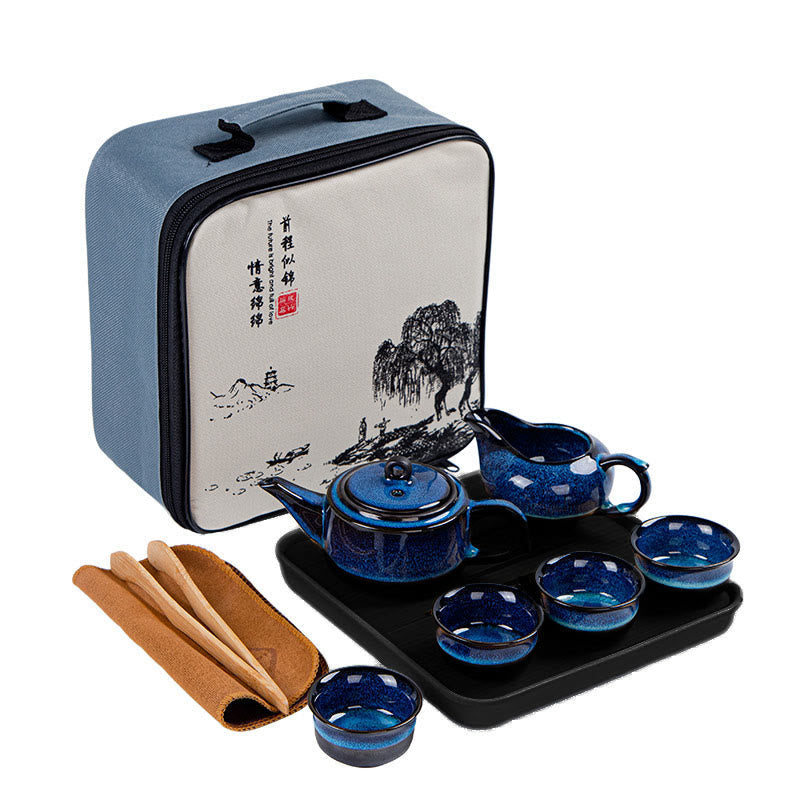
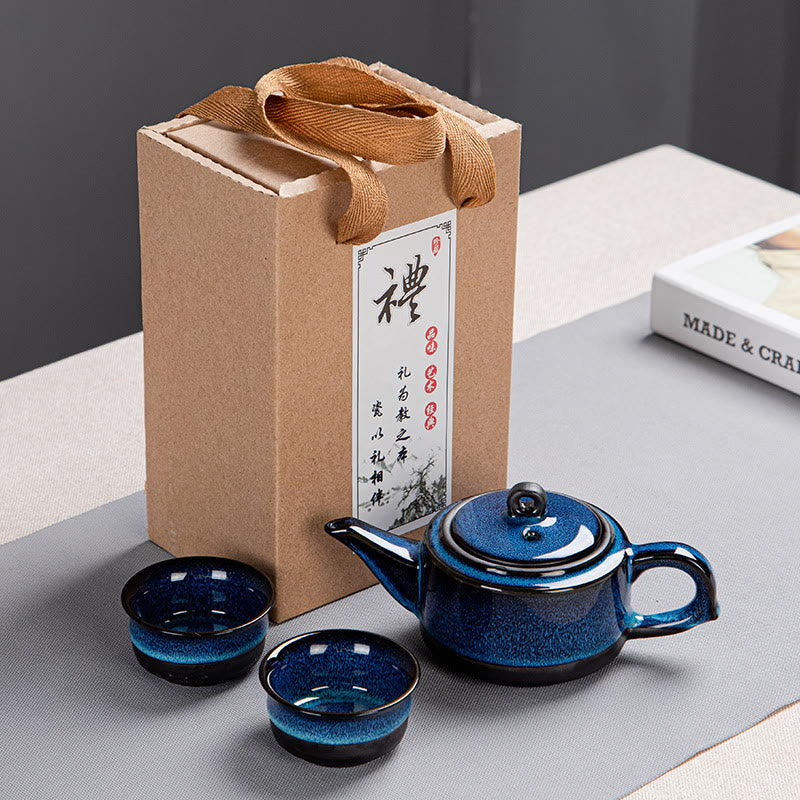
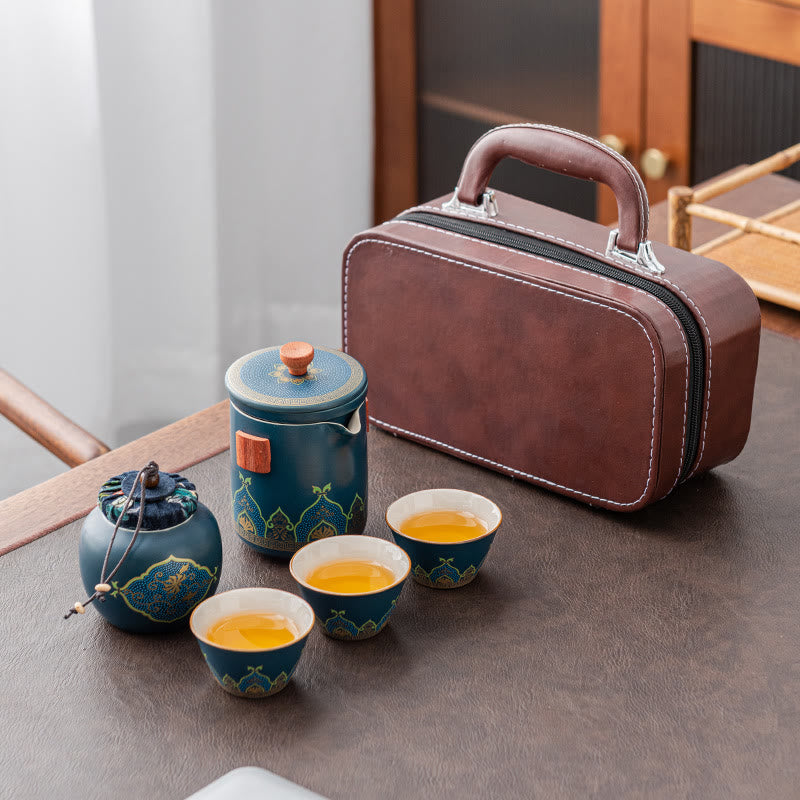
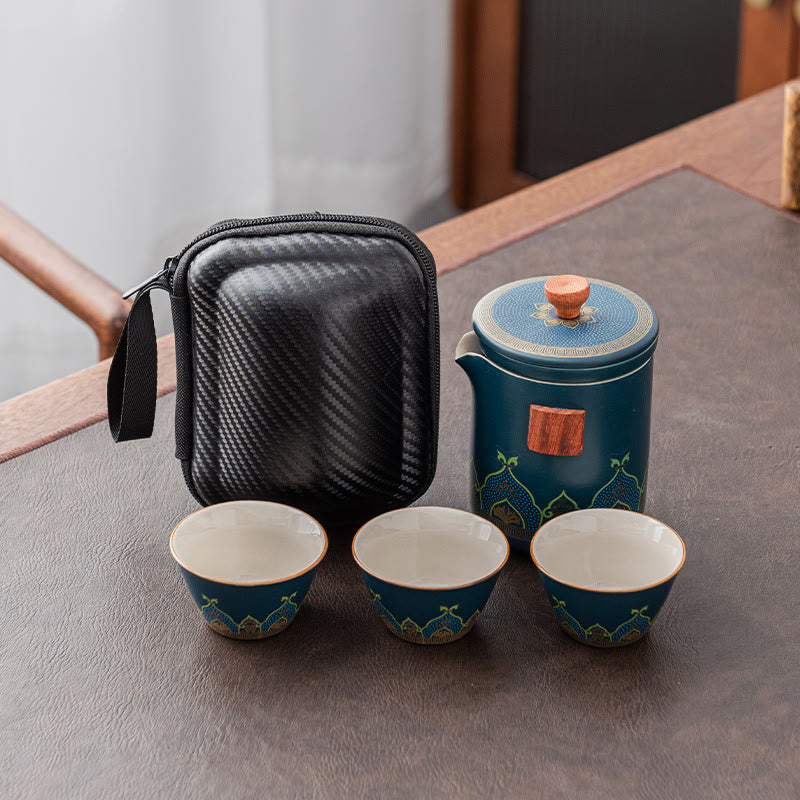
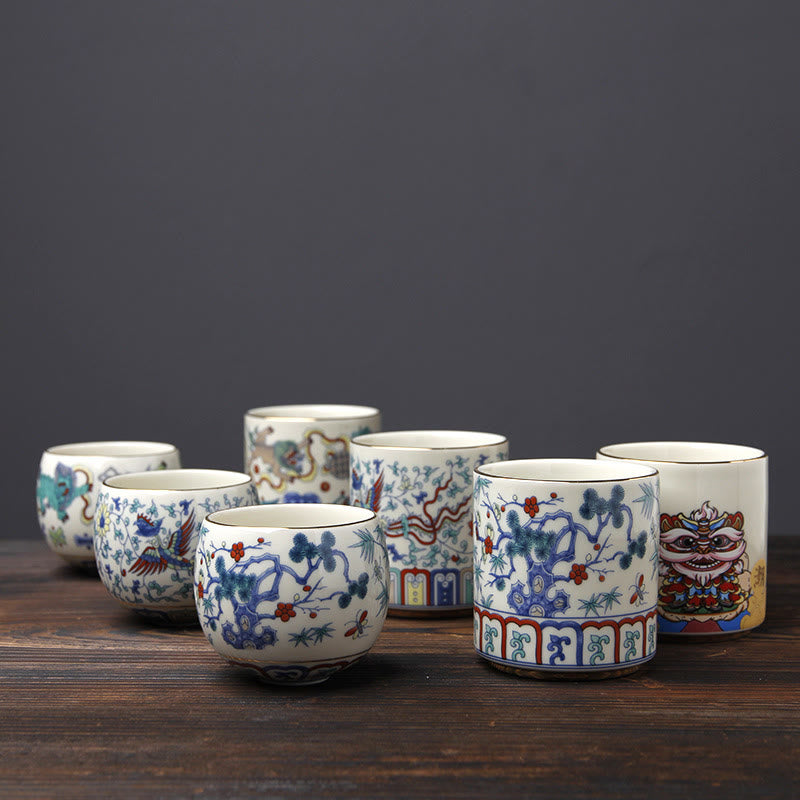

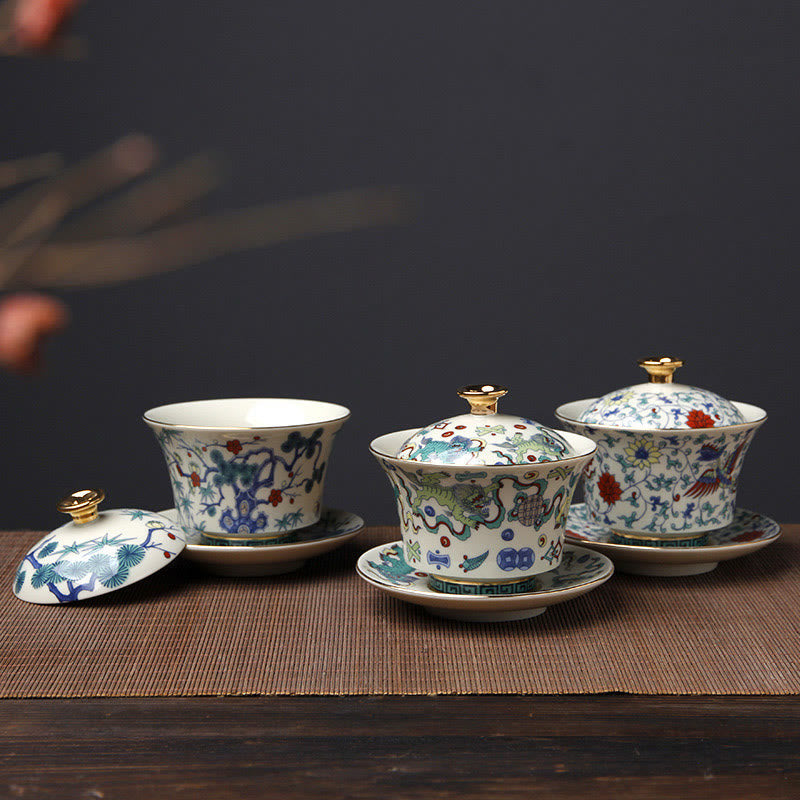
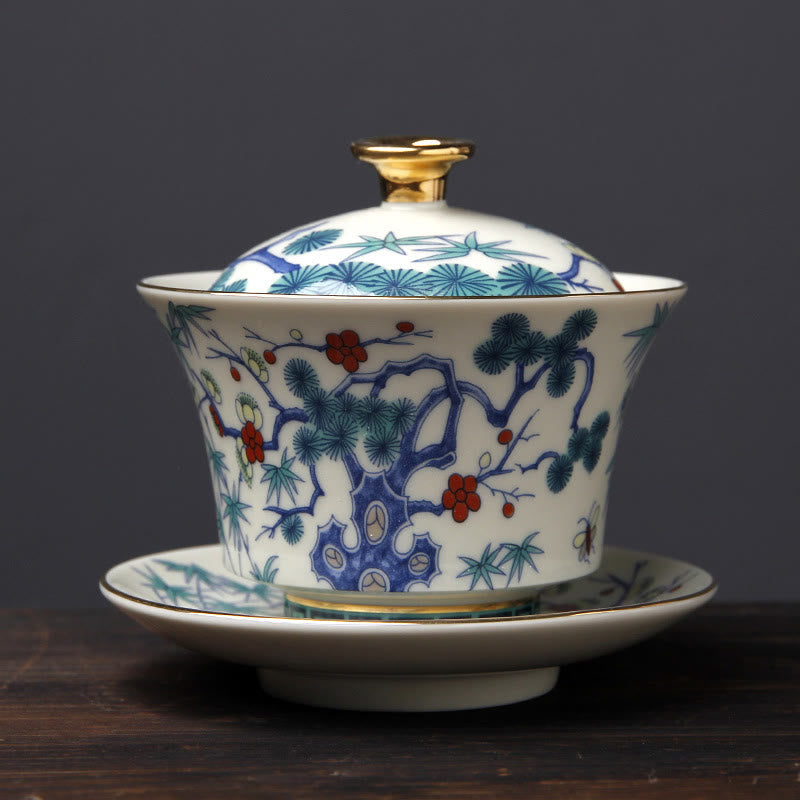
Entdecken Sie die ruhige Eleganz und das tiefe kulturelle Erbe unserer kuratierten Sammlung chinesischer Keramik. Jedes Stück lädt Sie ein, die zeitlose Tradition des Tees zu erleben und verwandelt ein einfaches tägliches Ritual in einen Moment achtsamer Verbundenheit und ästhetischer Wertschätzung. Wir bei Healing Sounds glauben, dass dies nicht nur Keramik ist; sie sind Gefäße voller Geschichte, Kunstfertigkeit und ruhiger Energie, die für die Kunst des harmonischen Lebens von zentraler Bedeutung sind.
Der zeitlose Reiz des chinesischen Keramik-Teeservices
Ein chinesisches Keramik-Teeservice ist mehr als nur eine Sammlung von Tassen und Kannen; es ist eine Einladung zu einer jahrhundertealten Tradition voller Achtsamkeit und Kunstfertigkeit. Diese Sets sind nicht nur zum Aufbrühen und Servieren von Tee gedacht, sondern fördern auch eine tiefere Verbindung zum gegenwärtigen Moment. Die haptische Freude am Halten einer warmen Keramiktasse, die visuelle Freude an kunstvollen Designs und das gemeinsame Erleben einer Teezeremonie tragen zu einem einzigartigen Gefühl von Frieden und Wohlbefinden bei. Viele Teeliebhaber empfinden ein spezielles chinesisches Keramik-Teeservice als Bereicherung für ihre täglichen Rituale und verleihen dem Alltag einen Hauch zeremonieller Anmut.
Unsere Kollektion zeichnet sich durch Stücke aus, die sowohl traditionelle Ästhetik als auch zeitgenössisches Empfinden vereinen. Ob erfahrener Teekenner oder Neuling in der chinesischen Teekultur – bei uns finden Sie Artikel, die Ihren Wunsch nach Schönheit, Qualität und Authentizität erfüllen. Jedes chinesische Keramik-Teeservice in unserer Auswahl wird aufgrund seiner Fähigkeit ausgewählt, das Tee-Erlebnis zu bereichern und jeden Schluck zu einem unvergesslichen Erlebnis zu machen.
Erkundung der Materialien in chinesischem Keramik-Teegeschirr
Die Wahl des Materials ist bei einem chinesischen Keramik-Teeservice von größter Bedeutung und beeinflusst maßgeblich den Geschmack des Tees, die Wärmespeicherung und die Gesamtästhetik. Von zartem Porzellan über robustes Steingut bis hin zu edlem Yixing-Ton bietet jedes Material einzigartige Eigenschaften, die auf unterschiedliche Teesorten und Zubereitungsvorlieben zugeschnitten sind.
Die Eleganz von Porzellan-Teeservices
Porzellan, bekannt für seine feine, glatte Textur und oft durchscheinende Qualität, ist eine klassische Wahl für chinesisches Teegeschirr. Ein Gongfu-Teeservice aus Porzellan wird besonders wegen seiner porenfreien Beschaffenheit bevorzugt, die sicherstellt, dass der reine Geschmack des Tees erhalten bleibt. Dadurch eignet sich Porzellan ideal, um die feinen Nuancen von zartem Grün-, Weiß- und Oolong-Tee zu genießen. Die Eleganz von Jadeporzellanservices oder klassischen blau-weißen Keramikdesigns verleiht dem Teeritual eine optische Anmut.
Viele unserer Porzellanservices sind mit handgemalten Motiven verziert, die von traditionellen Landschaften und Blumenmustern bis hin zu zeitgenössischen künstlerischen Ausdrucksformen reichen. Diese Details unterstreichen nicht nur die Schönheit des Services, sondern spiegeln auch das reiche künstlerische Erbe chinesischer Keramikkunst wider. Ein asiatisches Teeservice aus Porzellan wird oft zu einem geschätzten Erbstück, das über Generationen weitergegeben wird.
Die einzigartigen Eigenschaften von Yixing-Ton
Yixing-Ton-Teekannen aus Yixing in der Provinz Jiangsu werden von Teeliebhabern besonders für die Zubereitung von Oolong-, Pu-Erh- und Schwarztee geschätzt. Die unglasierte, poröse Beschaffenheit des Yixing-Ton ermöglicht es der Teekanne, die Öle des Tees mit der Zeit aufzunehmen, wodurch der Geschmack nachfolgender Aufgüsse allmählich verbessert wird. Jede Yixing-Ton-Teekanne entwickelt mit der Zeit eine einzigartige Patina und Würzung und wird so zu einem persönlichen und sich entwickelnden Teil der Teereise.
Der charakteristische violette, rote oder gelbbraune Ton ist reich an Mineralien und trägt zu einem weicheren, milderen Geschmack bei. Diese Teekannen werden für ihre hervorragende Wärmespeicherung und ihre „Atmung“ geschätzt, die den Charakter des Tees verbessern soll. Um ein authentisches Yixing-Stück zu finden, muss man sich mit Ton, Handwerkskunst und künstlerischem Wert auskennen.
Vielseitiges Steinzeug und andere Keramik
Neben Porzellan und Yixing-Ton werden auch verschiedene andere Keramikmaterialien verwendet, um schönes und funktionales Teegeschirr herzustellen. Steingut beispielsweise bietet hervorragende Haltbarkeit und Wärmespeicherung und ist daher eine praktische Wahl für den täglichen Gebrauch. Sein oft rustikaler Charme und die erdigen Töne sorgen für eine andere Ästhetik als die edle Porzellanqualität. Viele chinesische Teetassen und -kannen werden aus hochwertigem Steingut gefertigt und bieten eine ausgewogene Mischung aus Schönheit und Widerstandsfähigkeit.
Die Vielfalt der Keramikmaterialien sorgt dafür, dass es für jeden Geschmack und jede Teesorte das perfekte chinesische Keramik-Teeservice gibt. Das Verständnis dieser Materialunterschiede kann Ihre Auswahl und Ihren Teegenuss deutlich verbessern.
Handwerkskunst – das Qualitätsmerkmal chinesischer Keramik-Teeservices
Die Qualität eines chinesischen Keramik-Teeservices hängt eng mit dem Können und der Hingabe seiner Handwerker zusammen. Traditionelle chinesische Keramikkunst ist ein Erbe, das über Generationen weitergegeben wird. Sie erfordert in jeder Phase, von der Auswahl und Vorbereitung des Tons bis hin zum Formen, Brennen und Glasieren der Stücke, akribische Liebe zum Detail. Dieses Streben nach Exzellenz macht aus einem einfachen Teeservice ein Kunstwerk.
Handbemaltes Teegeschirr zeigt das Können des Künstlers durch komplexe Designs, die oft Szenen aus der Natur, der Mythologie oder der Kalligrafie darstellen. Die Präzision der Pinselstriche, die Harmonie der Farben und die Gesamtkomposition tragen zum ästhetischen Wert und der Einzigartigkeit des Sets bei. Selbst eine scheinbar einfache Glasur kann enormes Geschick erfordern, um die gewünschte Farbe, Textur und Gleichmäßigkeit zu erzielen.
Die Verarbeitung jedes einzelnen Stücks, insbesondere der Teekanne, ist entscheidend. Eine gut verarbeitete Teekanne verfügt über einen perfekt schließenden Deckel, einen Ausguss, der sauber und tropffrei gießt, und einen Henkel, der bequem und sicher in der Hand liegt. Diese funktionalen Aspekte sind ebenso wichtig wie die Optik und kennzeichnen die hervorragende Handwerkskunst eines chinesischen Keramik-Teeservices .
Kulturelle Authentizität und Tradition in Ihrem Teeritual
Ein chinesisches Keramik-Teeservice ist oft eine direkte Verbindung zum reichen kulturellen Erbe Chinas. Die Designs, Symbole und Formen des traditionellen Teegeschirrs sind bedeutungsvoll und spiegeln philosophische Konzepte, historische Ereignisse und glückverheißende Glaubensvorstellungen wider. Die Beschäftigung mit diesen Stücken kann Ihrem Teegenuss Tiefe und Bedeutung verleihen und Sie mit einer Tradition von Teeliebhabern und spirituellen Suchenden verbinden.
Authentizität kann sich bei einem Teeservice auf verschiedene Weise manifestieren: durch die Einhaltung traditioneller Formen wie dem Gaiwan, die Verwendung historisch bedeutsamer Motive (wie Drachen, Phönixe oder Bambus) oder die Verwendung alter Handwerkstechniken. Für viele verstärkt die Verwendung eines kulturell authentischen Teeservices die meditativen und rituellen Aspekte des Teetrinkens und macht es zu einem tieferen Erlebnis. Diese Verbindung zu traditionellem Teegeschirr ist für Sammler und Teeliebhaber gleichermaßen ein wichtiger Aspekt.
Bei Healing Sounds sind wir bestrebt, Stücke anzubieten, die dieses kulturelle Erbe ehren, sei es durch originalgetreue Reproduktionen klassischer Designs oder zeitgenössische Interpretationen, die die traditionelle Ästhetik respektieren. Wir glauben, dass die Authentizität eines Teegeschirrsets im chinesischen Stil wesentlich zu seiner energetischen Qualität und seiner Fähigkeit beiträgt, ein Gefühl von Frieden und Verbundenheit zu fördern.
Die Rolle eines chinesischen Keramik-Teeservices bei der Wärmespeicherung
Eine effektive Wärmespeicherung ist ein entscheidender funktionaler Aspekt jedes Teeservices, und chinesische Teeservices aus Keramik zeichnen sich in dieser Hinsicht aus. Die Fähigkeit des Materials, eine konstante Temperatur zu halten, ist entscheidend für den richtigen Teeaufguss, damit sich die Blätter entfalten und ihr volles Spektrum an Aromen und Düften freisetzen können. Verschiedene Keramikmaterialien bieten unterschiedliche Wärmespeicherungsgrade.
Porzellan ist zwar relativ dünn, kann aber Wärme gut speichern, insbesondere in dickwandiger Ausführung. Seine glatte Oberfläche sorgt außerdem für eine schnelle und gleichmäßige Erwärmung. Yixing-Ton ist bekannt für seine hervorragenden Wärmespeichereigenschaften und eignet sich daher ideal für Tees, die höhere Brühtemperaturen und längere Ziehzeiten erfordern, wie z. B. Pu-Erh und dunklere Oolongs. Die poröse Beschaffenheit des Tons trägt zudem zur Isolierung des Tees bei.
Auch das Design der Teekanne, einschließlich der Wandstärke und der Passform des Deckels, spielt eine wichtige Rolle. Ein gut gestaltetes chinesisches Keramik-Teeservice sorgt dafür, dass Ihr Tee während des gesamten Trinkens warm bleibt und ermöglicht so ein entspanntes und genussvolles Erlebnis ohne den Druck des schnell abkühlenden Tees. Diese gleichmäßige Wärme ist besonders wichtig für die Gongfu-Teezeremonie , bei der mehrere kurze Aufgüsse gemacht werden.
Den Sammelwert chinesischer Teeservices verstehen
Viele Menschen sind von chinesischen Keramik-Teeservices nicht nur wegen ihres praktischen Nutzens, sondern auch als Sammlerstücke fasziniert. Der Sammlerwert eines Teeservices kann von verschiedenen Faktoren beeinflusst werden, darunter Alter, Seltenheit, handwerkliche Verarbeitung, künstlerischer Wert und der Ruf des Künstlers oder der Werkstatt, die es hergestellt hat. Ein antikes chinesisches Teeservice kann einen erheblichen Wert haben, insbesondere wenn es gut erhalten ist und eine dokumentierte Herkunft aufweist.
Zu den Sammlerstücken zählt die Qualität des Materials, beispielsweise feines Porzellan oder authentischer Yixing-Ton. Auch die handwerkliche Fertigkeit beim Bemalen, Schnitzen oder Formen der Stücke spielt eine wichtige Rolle. Sets in limitierter Auflage oder von renommierten Keramikkünstlern gefertigte Stücke sind oft sehr begehrt. Auch zeitgenössische Stücke können Sammlerstücke werden, wenn sie außergewöhnliche Kunstfertigkeit und Innovation aufweisen und gleichzeitig traditionelle Formen respektieren.
Für Sammler ist es wichtig, sich über die verschiedenen Stile, Epochen und Hersteller zu informieren. Ein Auge für Qualität und Authentizität entwickelt sich durch Erfahrung und Studium. Ein chinesisches Teekannen-Geschenkset , insbesondere eines von hoher Qualität und einzigartigem Design, kann auch der Beginn einer wertvollen Sammlung sein.
Durchführung der Gongfu-Teezeremonie mit Ihrem Set
Die Gongfu-Teezeremonie , was so viel bedeutet wie „mit Geschick zubereiteter Tee“, ist eine traditionelle chinesische Methode der Teezubereitung, bei der das Sinneserlebnis und der rituelle Zubereitungsprozess im Vordergrund stehen. Ein ordentliches chinesisches Keramik-Teeservice ist für diese Praxis unerlässlich. Zu den wichtigsten Bestandteilen gehören typischerweise eine kleine Teekanne (oft aus Yixing-Ton oder Porzellan), eine Kanne zum Teilen (Gong Dao Bei), ein Teetablett (Cha Pan) mit Abfluss, kleine Probiertassen und verschiedene Teeutensilien (Cha Dao).
Die Zeremonie umfasst präzise Schritte: Erwärmen des Teegeschirrs, Abspülen der Teeblätter, sorgfältiges Kontrollieren der Ziehzeiten für mehrere kurze Aufgüsse und bewusstes Genießen jedes Aufgusses. Ziel ist es, das bestmögliche Aroma aus den Teeblättern zu extrahieren und eine meditative, konzentrierte Atmosphäre zu schaffen. Die Verwendung eines Gongfu-Teeservices aus Porzellan oder Yixing-Ton kann die Authentizität und den Genuss dieses Rituals deutlich steigern.
Unsere Kollektion umfasst Artikel, die perfekt für die Gongfu-Teezeremonie geeignet sind, von kompletten Sets bis hin zu Einzelstücken wie Keramik-Gaiwans und Teesieb-Sets . Diese zeremonielle Teezubereitungspraxis kann eine zutiefst bereichernde Möglichkeit sein, sich mit Ihrem Tee, Ihren Sinnen und einer reichen kulturellen Tradition zu verbinden. Sie macht das Teetrinken zu einer Kunstform und fördert Ruhe und Wertschätzung.
Wählen Sie Ihr ideales Teegeschirr im chinesischen Stil
Die Auswahl des perfekten chinesischen Teegeschirrs ist eine persönliche Angelegenheit und hängt von Ihren Teevorlieben, Ihrem ästhetischen Geschmack und der beabsichtigten Verwendung des Sets ab. Überlegen Sie, welche Teesorten Ihnen am besten schmecken. Wenn Sie zarten grünen oder weißen Tee bevorzugen, könnte ein Porzellanservice ideal sein. Für Oolongs und Pu-Erhs könnte eine Teekanne aus Yixing-Ton eine wunderbare Investition sein.
Überlegen Sie, wie groß das Set sein soll. Bereiten Sie Tee normalerweise für eine Person zu oder teilen Sie ihn oft mit Gästen? Viele traditionelle chinesische Keramik-Teeservices sind für kleinere, konzentriertere Portionen konzipiert, typisch für den Gongfu-Stil. Achten Sie auch auf die Optik. Bevorzugen Sie klassische blau-weiße Keramikmuster , minimalistische Designs oder lebendige, handgemalte Kunst?
Bei Healing Sounds möchten wir Sie ermutigen, die Nuancen jedes einzelnen Stücks zu entdecken. Informieren Sie sich über die Materialien, schätzen Sie die Handwerkskunst und stellen Sie sich vor, wie ein bestimmtes Set zu Ihrem Leben und Ihren Ritualen passen könnte. Ob Sie eine elegante Ergänzung für Ihr chinesisches Geschirr oder ein spezielles Set für achtsames Teetrinken suchen – unsere Kollektion bietet Ihnen Optionen, die inspirieren und begeistern. Unsere Auswahl an orientalischen Tee-Accessoires ergänzt Ihr ausgewähltes Set zusätzlich.
Entdecken Sie unsere chinesische Keramik weiter
Um Ihre Reise in die Welt der chinesischen Teekultur zu vertiefen und spezifische Komponenten für Ihr ideales Teeerlebnis zu finden, laden wir Sie ein, unsere spezialisierten Kollektionen zu entdecken:
- Chinesische Teetassen : Entdecken Sie unsere exquisite Auswahl an individuellen chinesischen Teetassen, perfekt, um jede Nuance Ihres Lieblingsgebräus zu genießen. Sie finden verschiedene Materialien und Designs, um Ihr vorhandenes Teegeschirr zu ergänzen oder eine neue Sammlung zu beginnen.
- Chinesische Teekannen : Entdecken Sie unser Sortiment chinesischer Teekannen aus Materialien wie Yixing-Ton und Porzellan, die für optimales Aufbrühen und zeitlose Schönheit sorgen. Jede Teekanne wird aufgrund ihrer handwerklichen Qualität und ihrer Fähigkeit, Ihr Teeritual zu verschönern, ausgewählt.
Jedes chinesische Keramik-Teeservice in unserer Kollektion von Healing Sounds ist mehr als nur ein Gefäß für Tee; es ist eine Brücke zu einer Tradition der Achtsamkeit, Kunstfertigkeit und tiefen Verbundenheit. Wir hoffen, dass diese Stücke Ihren täglichen Ritualen ein Gefühl von Frieden, Schönheit und Harmonie verleihen und Ihre Momente der stillen Kontemplation oder des gemeinsamen Genusses bereichern.
Häufig gestellte Fragen zu chinesischen Keramik-Teeservices
Ein traditionelles chinesisches Teeservice wird oft als „Cha Ju“ (茶具) bezeichnet, was wörtlich übersetzt „Teewerkzeuge“ oder „Teeutensilien“ bedeutet. Für bestimmte Zubereitungsarten wie die Gongfu-Teezeremonie kann das Service auch als „Gongfu Cha Ju“ bezeichnet werden. Auch einzelne Komponenten haben eigene Namen, wie zum Beispiel „Chahai“ für einen Fairnesskrug oder „Gaiwan“ für eine Schale mit Deckel zum Aufbrühen und Trinken.
Ein komplettes chinesisches Teezeremonie-Set, insbesondere im Gongfu-Stil, umfasst typischerweise mehrere wichtige Gegenstände. Dazu gehören eine Teekanne (oft klein, aus Yixing-Ton oder Porzellan), eine Teekanne oder Fairness-Tasse (Gong Dao Bei) für ein gleichmäßiges Aroma , kleine Probierbecher und ein Teetablett (Cha Pan) mit Abfluss für verschüttetes und weggeworfenes Wasser. Optionale, aber häufige Ergänzungen sind ein Teelöffel, ein Teelöffel, ein Teelöffel, ein Teetrichter, ein Geschirrtuch und Tee-Haustiere.
Das beste Material für ein chinesisches Keramik-Teeservice hängt weitgehend von der Teesorte und Ihren persönlichen Vorlieben ab. Porzellan eignet sich hervorragend für delikaten grünen, weißen und aromatischen Oolong-Tee, da es keine Aromen annimmt und den wahren Charakter des Tees zur Geltung bringt. Yixing-Ton wird für Pu-Erh-, schwarzen und gerösteten Oolong-Tee sehr geschätzt, da seine Porosität den Geschmack des Tees mit der Zeit verbessern kann. Steingut bietet eine gute Wärmespeicherung und ist für den täglichen Gebrauch robust.
Wie bereits erwähnt, gibt es nicht das eine beste Material; es kommt auf die Eignung an. Wegen seiner Vielseitigkeit und der Erhaltung des ursprünglichen Geschmacks verschiedener Teesorten wird Porzellan oft empfohlen, insbesondere für Neulinge im Bereich chinesischer Tees. Für die gezielte Zubereitung bestimmter Teesorten wie Pu-Erh oder Oolong, bei denen eine Geschmacksverstärkung über die Zeit erwünscht ist, wird Yixing-Ton von vielen Kennern als überlegen angesehen. Glas ist eine weitere Option, wenn die visuelle Bewunderung der sich entfaltenden Teeblätter im Vordergrund steht, bietet jedoch eine geringere Wärmespeicherung als Keramik.
Porzellan ist eine spezielle Keramikart, die für ihre Festigkeit, Lichtdurchlässigkeit und Porenfreiheit bekannt ist. Es wird aus feinem Kaolin hergestellt, der bei sehr hohen Temperaturen gebrannt wird. Der allgemeine Begriff „Keramik“ umfasst verschiedene tonbasierte Materialien, darunter Steingut, Steinzeug und Porzellan. Daher sind alle Porzellan-Teeservices aus Keramik, aber nicht alle chinesischen Keramik-Teeservices sind aus Porzellan. Nicht-Porzellan-Keramik wie Steinzeug ist in der Regel undurchsichtiger und kann unglasiert poröser sein als Porzellan.
Handwerkskunst ist entscheidend für die Qualität eines chinesischen Keramik-Teeservices . Sie beeinflusst Funktionalität, Haltbarkeit und Ästhetik. Erstklassige Handwerkskunst sorgt für eine ausgewogene Teekanne, die reibungslos gießt, einen fest sitzenden Deckel und Tassen, die angenehm in der Hand liegen. Künstlerische Meisterleistung zeigt sich in der Präzision handgemalter Muster, der Gleichmäßigkeit der Glasuren und der Gesamtharmonie des Services. Mangelhafte Handwerkskunst kann zu Problemen wie tropfenden Ausgüssen, schlecht sitzenden Deckeln oder einer minderwertigen Verarbeitung führen und so den Teegenuss mindern.
Die kulturelle Authentizität eines chinesischen Keramik-Teeservices spiegelt sich in der Einhaltung traditioneller Formen, Materialien, Produktionstechniken und dekorativer Motive mit historischer und kultureller Bedeutung wider. Dies kann die Verwendung spezieller Tone wie Yixing, die Anwendung traditioneller Glasurmethoden oder die Einbeziehung von Motiven wie Drachen, Phönixen, Pflaumenblüten oder Kalligrafie bedeuten, die tief in der chinesischen Kunst und Symbolik verwurzelt sind. Ein authentisches Service verkörpert oft die zentralen Philosophien und Ästhetiken der chinesischen Teekultur und verbindet den Benutzer mit jahrhundertealter Tradition.
Ein chinesisches Keramik-Teeservice speichert die Wärme dank der isolierenden Eigenschaften von Keramik und des Designs des Teegeschirrs. Dickere Wände in Teekannen und Tassen sorgen für eine bessere Isolierung. Materialien wie Yixing-Ton sind aufgrund ihrer mineralischen Zusammensetzung und porösen Struktur besonders für ihre hervorragende Wärmespeicherung bekannt. Ein gut schließender Deckel der Teekanne ist ebenfalls entscheidend, da er den Wärmeverlust durch Verdunstung minimiert. Diese anhaltende Wärme ermöglicht ein optimales Aufbrühen des Tees und ein angenehmeres, entspannteres Trinkerlebnis.
Um den Wert einer chinesischen Teekanne zu bestimmen, sind verschiedene Faktoren zu berücksichtigen. Materialqualität (z. B. authentischer Yixing Zisha-Ton, feines Porzellan), Verarbeitung (Präzision, Kunstfertigkeit, handwerkliches Geschick), Alter und Seltenheit (Antiquitäten sind oft wertvoller) sowie die Signatur des Künstlers oder das Herstellerzeichen sind wichtige Indikatoren. Auch die Herkunft oder eine dokumentierte Besitzgeschichte kann den Wert deutlich steigern. Für eine genaue Bewertung empfiehlt sich die Beratung durch einen Experten für chinesische Keramik oder Antiquitäten.
Mehrere Faktoren erhöhen den Sammlerwert eines chinesischen Keramik-Teeservices . Dazu gehören der künstlerische Wert (einzigartiges Design, außergewöhnliche Malerei oder Schnitzerei), die Seltenheit (begrenzte Produktion, Antiquitätenstatus), die historische Bedeutung (Zugehörigkeit zu einer bestimmten Epoche oder einem bestimmten Ereignis), der Ruf des Künstlers oder der Werkstatt sowie die Qualität der Materialien und der Handwerkskunst . Auch der Zustand ist entscheidend; Sets in ausgezeichnetem Originalzustand sind begehrter. Eine dokumentierte Herkunft und die Zugehörigkeit zu einer bedeutenden Sammlung können den Sammlerwert ebenfalls steigern.
Setzen Sie Ihre Erkundung raffinierter Haushaltsgegenstände fort, indem Sie unsere Hauptkollektion an Geschirr besuchen.



